


Are you sure you want to reset the form?
Your mail has been sent successfully
Are you sure you want to remove the alert?
Your session is about to expire! You will be logged out in
Do you wish to stay logged in?
Please note that you will need to be logged in to view the content featured below

Sport and physical activity have been shown to positively affect not only cardiovascular health and body composition, but also the complex brain systems implicated in well-being and mental health. Research suggests that physical activity can have a beneficial impact on a diverse range of mental health conditions - including schizophrenia, Alzheimer’s disease and depression - as well as enhancing general well-being. The hippocampus, a highly networked brain structure, is sensitive to the effects of physical activity. Learn more about the relationship between physical activity and the brain.

Anxiety is a frequent underlying cause for athletes failing to perform to their usual standard, particularly in situations of exceptional pressure (for example, a soccer penalty shoot-out or a return to competitive play after injury). Read more about the effects of anxiety on performance, including common coping techniques and examples of top athletes encountering anxiety-related issues.
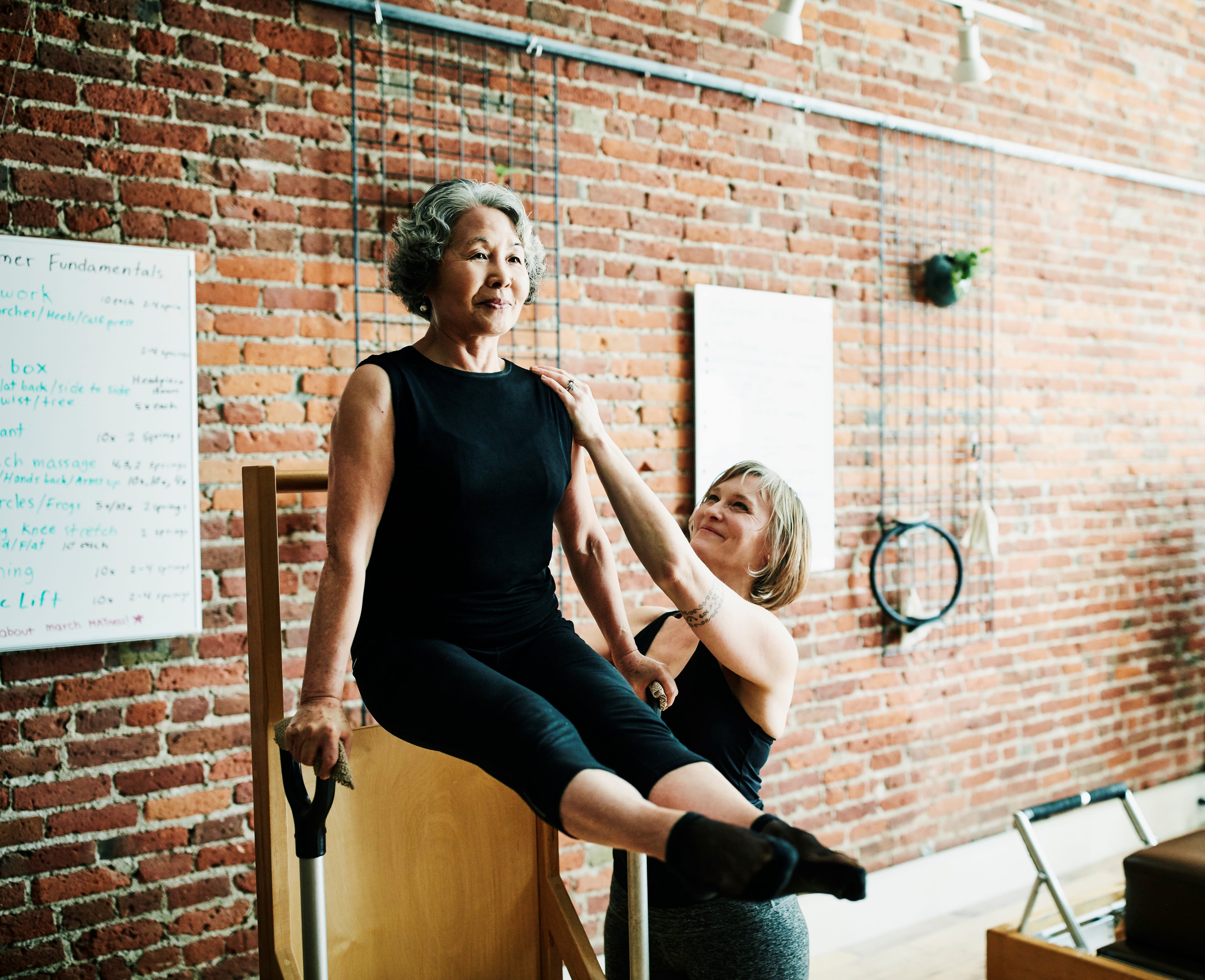
Leisure and physical activity can make a positive contribution to the well-being, cognitive health and quality of life of older adults. Participating in activities such as social dancing, walking for exercise and swimming can provide opportunities for personal growth and stress reduction, as well as slow cognitive decline. Learn more about ageing-specific theories of psychosocial well-being, or view a demonstration of exercise diagnosis and prescription for older adults.

In Gold Medal Nutrition Glen Cardwell simplifies nutrition and reveals the essential food components that are needed for good physical health. The underlying science behind a balanced diet is explored, with an in-depth look at the benefits of different recommended food groups. Click here to find out more about what foods to eat to improve wellbeing and to get the best out of your body.

Competitive sports is a high pressured environment, and strict diet and exercise regimes are crucial to performing well. But at what stage can these habits become unhealthy eating disorders? This chapter from Fundamentals of Sport and Exercise Nutrition examines the distinguishing behaviours of different eating disorders such as Anorexia Nervosa, Bulimia Nervosa, and Anorexia Athletica, and explains why such conditions can be so difficult to recognise in pro-athletes.

Chronic undernutrition during childhood can have long-term consequences for growth and maturation in adulthood. However undernutrition is a heterogeneous term that can have varying meanings for specialists, and is difficult to quantify. This chapter examines the criteria and prevalence of undernutrition in preschool children, school age children and adolescents, with an in-depth analysis of the long term effects this can have.

Nutritional supplements are by no means uncommon in the high pressure world of sport, where athletes often strive to enhance and improve performance. Such aids can complement an athlete’s nutritional plan, however, they have the potential to be harmful when used inappropriately. This chapter from Performance Nutrition: Applying the Science of Nutrient Timing breaks down nutrition supplements into three categories - dietary supplements, sports supplements, and ergogenic aids – and describes common examples with an in depth look at their benefits and recommended usage.

Water is second only to oxygen as a necessity for maintaining life. The body can withstand a 40% loss in body mass from starvation, but just a 9% to 12% loss of body mass from fluid loss can be fatal. It is not surprising then that water plays a crucial part in exercise performance. Jay Hoffman outlines the key processes for hydration during exercise and at rest, including water balance, fluid replacement, electrolyte balance and the effect of hypohdration on physiological function.

Can exercise continue to improve your quality of life in your later years? Just what are the effects of exercise on aging? This chapter from Physical Activity for Health and Fitness explores how the cardiorespiratory endurance and muscular strength of older people are affected by physical activity, and how regular, lifelong physical activity in younger people will affect their health and vitality as they grow older.

Values usually drive our behavior; they reflect what we consider to be most important, such as our health, family, happiness, knowledge, and faith. In Applied Health Fitness Psychology, Mark H. Anshel examines the role of religious and spiritual beliefs in maintaining a healthy lifestyle, the ways in which physical and mental health professionals can apply faith-based content in consulting with patients and clients of faith, and how religious and spiritual beliefs, texts, and programs can provide greater incentive to initiate and maintain healthy levels of fitness.

For people with diabetes, regular participation in fitness activities can help to lose fat weight, gain muscle mass, and improve overall blood glucose. Insulin sensitivity is likely to improve, resulting in a need for lower doses of insulin or other diabetes medications. In this chapter, Sheri R. Colberg outlines key fitness activities, ranging from low-intensity activities such as yoga to power ones like kickboxing, and endurance-based race walking and stationary cycling, with general recommendations for managing blood glucose during and after the fitness activities, separated out by insulin changes for anyone using a pump or injections, dietary changes, or a combination of both.

The term "exercise prescription" is often used, but have we actually considered its meaning and its implications? We can think of a prescription as "a written or verbal order for administering medicine or other treatments based on a diagnosis of the patient's needs". There is a very important concept contained in this definition which is commonly ignored when we use the word in association with fitness: the diagnosis process. In this video, Joseph Signorile outlines the importance of fitness techniques as precise tools that can be used to provide a targeted training intervention, while in this video he puts the concept to practice and looks at the diagnosis and prescription model through the diagnostic sheets of four case studies.

With so many people now either inactive or infrequently active, effective programs to help them start and stick with an active lifestyle are critical. Many of the techniques used to promote physical fitness originated from psychological theories of motivation and behavior change. The stages of motivational readiness for change model evolved from the work of Dr. James Prochaska and Dr. Carlo DiClemente who studied the stages of changing health habits. This chapter from Motivating People to be Physical Active outlines the concepts of motivational readiness and stages of change, and describes the strategies and techniques for behavior change.
This Topic in Focus brings together a carefully curated selection of exclusive instructional material from the brand new Human Kinetics Health Care in Sport and Exercise module. From injury assessment and management, to cultural competence and sports massage techniques, this rich collection is your gateway into this important topic.

Injuries happen, and when they do, athletes and coaches need to have access to quick support. Sports Injuries Guidebook, Second Edition is an authoritative guide covering more than 150 common sports injuries that will arm you with the expert guidance you need to understand injuries and get back in the game. This chapter provides a broad overview of the different types of athletic injuries one may encounter, along with initial assessment and management strategies. It will categorize injuries based on the tissue or system injured, discuss principles of treatment approaches, and provide a comprehensive pathway to allow the athlete a safe return to sport.

Developing cultural competence is a process in which an athletic trainer learns to appreciate and respect cultural differences and take them into consideration in order to care for patients in a culturally congruent manner. Cultural competence can be developed, and doing so takes time, energy, and commitment; the process requires an active choice followed up with conscious effort. For athletic trainers it is important to be responsive to the needs of all patients, regardless of how they are packaged. Click here to read more from Cultural Competence in Sports Medicine, and learn how to develop cultural competence.

Our understanding of the physiology of stretching has broadened as a result of advances in research on the subject. Traditionally, explanations of the benefits of stretching have been based on a mechanical model proposing that stretching increases muscle length. As researchers continue to study the effects of various forms of stretching in an attempt to understand what actually happens, it is important to include stretching as a valuable component of an overall health and fitness program. This chapter from Facilitated Stretching, Fourth Edition looks at some of the elements of stretching, including soft tissues, types of muscle contractions, stretch reflexes, and different stretching techniques.

Sport-related neurological injuries are among the most complex and dreaded injuries that an athlete can sustain. Increased awareness and medical advances have certainly led to a greater understanding of the causation, diagnosis, and treatment of sports-related neurological injuries, although it is clear that there is still much to learn. To grasp the enormous public health impact these injuries have, it is paramount to appreciate that neurological injury can occur in just about any type of sport. This chapter from the Handbook of Neurological Sports Medicine: Concussion and Other Nervous System Injuries in the Athlete outlines neurological injuries across a spectrum of sports ranging from recreational activities to organized athletic competition.

Individual massage techniques are the building blocks of a sports massage session. Skilled practitioners combine these techniques into therapeutic sequences and perform them with the rhythm, pace, and pressure needed to produce the desired results. Understanding Sports Massage, Second Edition provides readers with an understanding of the fundamental theory and practical basis for using sports massage to keep athletes in top shape, recover from injuries, and improve performance. Sports massage practitioners must understand the physiological and psychological effects of techniques and their combinations to apply them effectively. This chapter provides a knowledge base for thoughtful and informed practice of the manual techniques of sports massage.
To celebrate the launch of Human Kinetics Physical and Health Education, we are showcasing a selection of essential readings for teachers and educators from this exclusive collection of ebooks and videos.

Understanding the philosophical basis for and sociocultural context of inclusive physical activity is an important prerequisite to offering physical activity programs that include all individuals regardless of age, ability, or experience. This chapter from Inclusive Physical Activity presents a philosophy of inclusive physical activity and a contemporary approach to including all individuals, regardless of ability, in physical activity programs. Definitions of wellness have changed over the years, but an important step toward further progress in including all individuals in physical activity and health promotion programs is to focus on ability, not disability.

Culturally responsive teaching in the physical education setting involves more than having students learn about other cultures or develop an appreciation for their own heritage. Nor is it merely having groups of students participate in a series of games from other countries. Culturally responsive teaching stresses the need for teachers to take into account the student’s race and ethnic origin as well as linguistic and academic background, since one’s culture can influence a preferred learning style, communication patterns, values and partiality toward specific physical activities and sport, and orientation to school. Read this chapter from Urban Physical Education to learn more.

In Survive and Thrive as a Physical Educator Alisa R. James explores the unique challenges of teaching and offers a wealth of information on handling day-to-day issues, such as adapting to the work environment, understanding the school culture, communicating with parents, and behavior management. In this chapter James provides support for professional development within the field of teaching physical education which will help you grow as an educator. You can explore several options that will enhance your professional and personal growth as a teacher, including joining professional organizations, reading professional literature, continuing your education, creating a professional development plan and portfolio, and working with a mentor.

Good mental health gives you an overall sense of well-being and the ability to adapt, maintain balance, and manage difficult situations. However, in the United States, about one in four adults suffers from a diagnosable mental disorder in a given year, and about half of all college students report that they’ve had trouble functioning due to depression. This chapter from Health and Wellness for Life provides an overview of the history of the study of mental health and mental disorders and explain how treatment methods have changed over time. You’ll learn how the brain and the environment influence mental health and what behaviors help professionals diagnose a mental illness.

Self-esteem is a measure of our self-worth (both physical and emotional), self-respect, and personal potential. Without self-esteem, it is more difficult to overcome adversities, control our emotions, and deal effectively with others. A young person’s ability to stand up to peer pressure is greatly influenced by one’s self-esteem level. The activities outlined within this chapter from Judy Demers’ Character-Building Activities emphasize self-esteem, personal attributes, values, self-awareness, and the effects people have on others. By gaining a better sense of who they are, young people can learn ways to change and control destructive or inappropriate behaviors.
This Topic in Focus brings together a carefully curated selection of exclusive instructional material from across the Human Kinetics Library platform on the topic of Careers and Professional Development in sport. From careers in dance and resource management, to career transition after a sporting career, this rich collection is your gateway into this important subject.

Never before has a greater variety of careers been available in dance - and never before has such comprehensive, expert guidance on those burgeoning careers been accessible in one book. Ali Duffy’s Careers in Dance: Practical and Strategic Guidance From the Field (2020) is a master guide that will help students navigate the expanding opportunities in dance and familiarize current professionals with potential career choices that best align with their pursuits and strengths. This highly practical text offers a wealth of information on career options in a variety of settings and with a variety of focuses, including commercial ventures, scholarly pursuits, administrative avenues, medical and scientific settings, and interdisciplinary opportunities. Click here to read the Introduction to this volume.

Coaches take on various roles; that is, their responsibilities are dependent on the type of setting they are coaching within and their own level of development. Yet coaching titles are at times not reflective of the coach’s experience or level of knowledge, and therefore may not fully describe a coach’s ability to produce effective coaching practices. In this chapter from Coach Education Essentials (2020), Clayton R. Kuklick and Brian T. Gearity provide a framework, informed by existing research on knowledge development, that helps identify gaps or weaknesses in coaches’ knowledge. This framework organizes professional, interpersonal, and intrapersonal knowledge and connects what coaches are capable of based on the knowledge they possess in each stage of their development.

In the past two decades, interest in the career transitions of athletes has gained momentum. The evolution of research in this field has helped us understand that athletic careers are not discrete occurrences composed of participation, termination, and retirement but rather a sequence of stages that present idiosyncratic challenges. Each athlete has different ways of coping with these demands. This chapter from Assessment in Applied Sport Psychology (2018) provides information, insights, and practical assessment tools to help you guide transitioning athletes in a way that is positive, constructive, and life affirming during a time that is often experienced as negative, unpredictable, and stressful.

Human resources differ considerably from material resources, and it is not surprising that the field of study known as human resource management (HRM) has gained increasing significance. Textbooks and scholarly journals in this field have been and continue to be published, and almost every school of business administration addresses it in at least one specialized course. Now in its third edition, Human Resource Management in Sport and Recreation (2017) provides current and future practitioners with a solid foundation in research and application of human resource management in the sport and recreation industries. Click here to read the Introduction to this volume.

A key title from the Human Kinetics Physical and Health Education collection, Survive and Thrive as a Physical Educator: Strategies for the First Year and Beyond (2013) will help you face the unique challenges of teaching and support your development as a physical educator. Practical and reader friendly, Survive and Thrive as a Physical Educator is filled with the most current information plus examples based on the author's experiences as both a K-12 teacher and a college instructor who prepares future teachers. You'll also find a wealth of information on handling day-to-day issues, such as adapting to the work environment, understanding the school culture, communicating with parents, and behavior management. Click here to read the Introduction to this volume.
This Topic in Focus brings together a carefully curated selection of exclusive instructional material from across the Human Kinetics Library platform on the topic of physiology in sport and exercise. From advanced exercise physiology and the physiology of aging, to the history of physiology and the physiology of cycling, this rich collection is your gateway into this important subject.

Advanced Exercise Physiology: Essential Concepts and Applications builds upon foundational topics and looks further into key physiological components to help advanced students gain a deeper level of understanding. Authors Jonathan K. Ehrman, Dennis J. Kerrigan, and Steven J. Keteyian address a wide range of complex topics with evidence-based information and a focused, targeted style. Enhancing the content are learning aids, more than 140 images and illustrations, and practical examples from among clinical patients, healthy individuals, and competitive athletes. Click here to learn more about pulmonary exercise physiology, and the factors that can enhance or negatively affect the function of the pulmonary system.

Physiological Aspects of Sport Training and Performance, Second Edition provides an in-depth discussion of physiological adaptation to exercise. Students will learn the importance of an evidence-based approach in prescribing exercise, while sports medicine professionals will appreciate using the text as a primary reference on conditioning and performance of athletes. A range of topics are covered, including environmental influences on performance, hydration status, sport nutrition, sport supplements, and performance-enhancing drugs. Click here to read a sample chapter on the Principles of Training. This online edition of the text includes access to videos of over 40 drills being performed in their entirety, including a dynamic warm-up routine video features 10 warm-up exercises.

Exercise physiology research is ongoing and its knowledge base is stronger than ever, but today’s scholars owe much of their success to their predecessors. History of Exercise Physiology (2014) brings together leading authorities in the profession to present this unique resource that is certain to become an essential reference for exercise physiology researchers and practitioners. The contributors to this book believe it is essential for exercise physiologists to understand the past when approaching the future and they have compiled this reference to aid in that process. Eric Franklin’s updated Dynamic Alignment Through Imagery expands on the classic text and offers audio files for dynamic imagery exercises which enable users to discover their natural flexibility and quickly increase their power to move. This chapter traces the history of physiology from antiquity to the early years of the 20th century.

It is important for physical activity instructors to understand the physiology of aging, which is often associated with progressive declines in physiological functions. Though much decline occurs in the cardiovascular system with age, regular physical activity slows the decline and restores function even in the frailest older adults. In this chapter from Physical Activity Instruction of Older Adults, Second Edition (2019) Priscilla G. MacRae summarizes the effects of biological aging on the major systems of the body, discusses how exercise affects these biological changes, describes the most common diseases associated with the aging of each system, and then discusses the implications for instructors of physical activity programs.
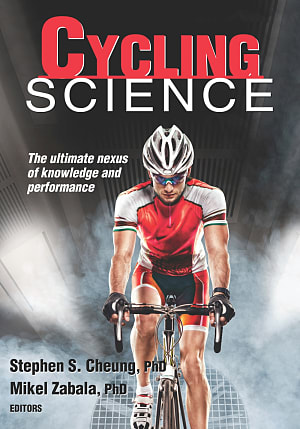
The body is an incredibly complex engine, which explains why scientists are still busily exploring its inner workings after centuries of study. Great advances in genetic technology and understanding have opened new avenues for exploration of how humans respond to exercise. This chapter from Cycling Science (2017) distills some of the basic principles in exercise science, defines the major systems and terminology, and discusses the latest concepts about what limits exercise capacity. It finishes with a look at the new wave of genetic insight into exercise performance and explores the limits of genetics as a predictive tool for identifying elite athletes.
This Topic in Focus gathers together material from across the Human Kinetics Library platform on the subject of psychology in sport and exercise. From advanced studies of sports medicine psychology and methods of measuring anxiety in sport, to an exploration of cultural sport psychology and the importance of psychological development in athletes, this rich collection offers a vast array of insights into the role of the mind in sport.

Athletes, exercisers, dancers, and other physically active people face the risk of sport injuries with every movement. The actual occurrence of such injuries (or even the anticipation of them) can result in significant effects on the physical and psychosocial well-being of participants within these contexts. The field of study labeled as sports medicine psychology encompasses the various roles that psychology plays within sports medicine contexts. Among these, it incorporates theory, research, and professional practice concerning the psychological, behavioral, and social aspects of injury prevention and rehabilitation among physically active participants, as well as the psychological roles and influences of those who coach, train, and care for them as part of their multidisciplinary sports medicine teams. This chapter from Advances in Sport and Exercise Psychology provides a detailed and expertly explained overview of the theory, research, and professional practice surrounding the psychological aspects of sport injuries, using this review to identify gaps in the knowledge base from which to draw implications for future research in sports medicine psychology.

Of all the psychological factors thought to influence sport performance, anxiety is often considered the most important. Sport psychologists have produced scores of articles, manuals, and tapes to help athletes deal with anxiety. Yet considerable disagreement remains about the most useful theory of anxiety and sport performance, as well as the most appropriate instrument for measuring anxiety in athletes.In the chapter ‘Competitive Anxiety’ from Emotions in Sport, authors John S. Raglin and Yuri L. Hanin seek to explore and evaluate different approaches to defining and measuring anxiety in athletes, paying particular attention to the Zones of Functioning (ZOF) model.

Cultural issues have become a significant aspect of the sports psychology field. As clinicians develop their practice to include more diverse athletes and sport psychologists expand to work in multicultural settings, the importance of taking into account cultural factors when practicing sport psychology cannot be understated. As the first compilation on the topic of multicultural considerations in sport psychology, Cultural Sport Psychology assists practitioners in creating strategies relative to the culture and context of their clients, with focus on important cultural factors such as religion, gender, personal space, and social structure. These factors and many others are laden with cultural assumptions that may contribute—positively or negatively—to athletic performance and an athlete's well-being. This chapter explores the plethora of cultural aspects that must be taken into account as a Western sport psychologist working in Ghana..

Ask any champion athlete whether psychology is vital to success, and the answer every time will be a resounding yes. What many athletes and coaches are unsure about is how precisely to develop psychological skills and the mental approach to training and competition. In this chapter from Inside Sport Psychology, the authors’ aim is to provide a structured, easy-to-use guide to help athletes and coaches develop the psychological aspects of performance. This introductory chapter continues with a warm-up exercise and a brief history detailing the evolution of applied sport psychology, draws upon the very latest research on skill development to explain how to organize practice sessions to maximize skill learning, and explores the intriguing nature-versus-nurture debate in sports psychology.
Kick off the back to school season with this carefully curated selection of Human Kinetics’ market-leading eBooks on fitness education. From the foundations of fitness education to the complexities of performance-based assessment, this rich collection supports physical education teachers, coaches, and researchers seeking to deepen their knowledge and expertise.

Fitness education is a crucial component of helping students understand the boundless benefits of lifelong physical activity. Designing and Teaching Fitness Education Courses offers secondary-level physical educators innovative ideas, practical answers, and guidance in implementing fitness education programming to meet the needs of all students. Enhanced by over 200 instructional photos and 139 video demonstrations of all the book’s exercises and stretches, this text comprehensively provides the tools for teachers to offer appropriate fitness, health, and wellness education. Click here to read this chapter on core Fitness Components and Training Principles.

Core Teaching Practices for Health Education is a compact and precise book that serves up effective core teaching practices for preservice and practicing health educators, as well as for health teacher educators. This work offers cutting-edge teaching skills that are specific to health education, practices that are highly transferable across the spectrum of fitness education, and detailed explanations of fifteen core practices and case studies. Click here to read a chapter on Teaching Health Content.

Class size, skill levels, and time factors can make assessments difficult when teaching fitness. However, Performance-Based Assessment for Middle and High School Physical Education shows that it is far from impossible. As a groundbreaking text explaining the theory behind assessment in fitness education, as well as the application of that theory in practice, this work provides teachers with the tools to appropriately structure performance-based assessments and acquire effective teaching strategies for standards-based instruction. Click here to read this chapter on Developing Culminating and Progressive Assessments.

Dance instructors see first hand the benefits of the art form every time they lead a class, watching students of all ages increase their strength and agility, and experience the pure joy of physical expression. This month, Human Kinetics Library highlights new and popular titles in our Dance Technique collection with free-to-read content exploring Dance Education and Instruction.
The chapters below offer instructional guides, lessons, and other resources to support dance instructors at all levels. Scroll down to discover activities that help children explore movement through collaboration, guidelines for activating a dance student’s body-brain connection, teaching tips for instructors of creative dance, and more.
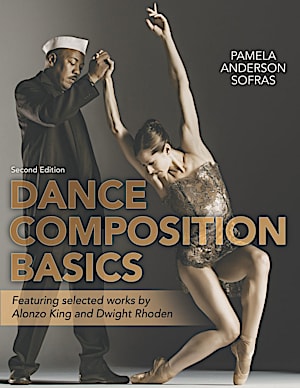
Dance Composition Basics introduces dancers to choreography through a series of problem-solving activities. This new edition of veteran dance teacher Pamela Anderson Sofras’ text, featuring the works of dance legends Alonzo King and Dwight Rhoden, offers lessons plans, assessment tools, and instructor guides to support dance instruction for students learning the fundamentals of choreography.
In this sample chapter, Sofras presents dynamic lessons to help dancers and choreographers connect with their physicality, from the first warm-up to the last cool-down of rehearsal.

Physical movement can be a valuable tool to help children explore, learn, and create in any setting. In Elementary Dance Education: Nature-Themed Creative Movement and Collaborative Learning, dancer and instructor Janice Pomer helps teachers develop the instructional skills they need to incorporate dance into their curricula with more than 70 movement activities and exercises for students in grades K-6, centered on nature-based themes.
This provided chapter offers practical lessons in which children use animals as inspiration for learning about their own bodies and the larger world we share.
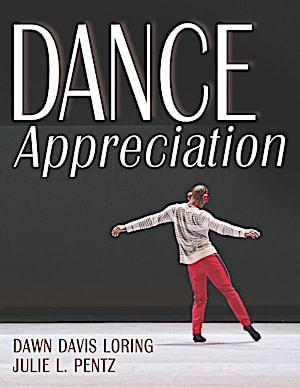
Dance Appreciation, by Dawn Davis Loring and Julie L. Pentz, helps students understand dance from the perspectives of dancers, choreographers, and professionals in other related careers. This formative text introduces students to a broad range of dance genres and helps both new and experienced dancers learn to connect their craft with other academic and artistic disciplines, as well as with their own life experiences.
Click here to read Loring and Pentz’s introductory chapter contextualizing dance by exploring its role in different cultures and settings.
The resource also includes dynamic videos exploring movement and choreography with internationally recognized dance scholar and choreographer Bliss Kohlmyer. Click here to view the first video in the series, introducing key choreography concepts.
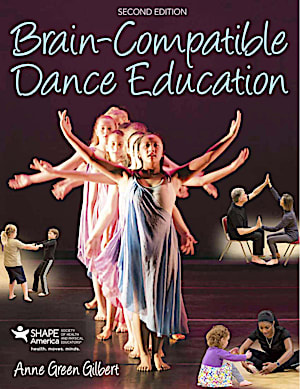
Anne Green Gilbert's Brain-Compatible Dance Education, Second Edition, strikes the perfect balance between hard science and practicality, making it an ideal resource for dance educators working with dancers of all ages and abilities. Gilbert connects fundamental brain research to the teaching and learning that takes place in classrooms and studios, emerging with insights that are accessible and easy to digest.
In this chapter, Gilbert introduces readers to the Body-Brain Connection, setting the stage for subsequent chapters detailing how awareness of that connection can help dancers strengthen a broad range of skills.

Every dancer of every age, ability, and style should be able to dance without risk of harm to the body or mind. Safe Dance Practice , by Edel Quin, Sonia Rafferty, and Charlotte Tomlinson, offers dance instructors advice for helping student maintain their health and safety, from the physical (nutrition and hydration, warm-ups and cool-downs) to the psychological (stress, group dynamics, mental balance).
In this sample chapter to read Gilbert’s chapter on different ways dance instructors can develop their teaching skills and support students on their creative dance journey.

Every dancer of every age, ability, and style should be able to dance without risk of harm to the body or mind. Safe Dance Practice, by Edel Quin, Sonia Rafferty, and Charlotte Tomlinson, offers dance instructors advice for helping student maintain their health and safety, from the physical (nutrition and hydration, warm-ups and cool-downs) to the psychological (stress, group dynamics, mental balance).
In this sample chapter, the authors provide practical advice for maintaining a safe and healthy dance environment, from maintaining an appropriate rehearsal space to implementing policies for safety and injury assessment.
Building strength correctly takes more than time and motivation; it also requires reliable, authoritative instruction. To aid fitness professionals as they help clients, students, and athletes become stronger and healthier, Human Kinetics Library is proud to offer our new Strength and Conditioning collection, a library of ebooks and videos to support training programs at all levels.
Scroll down to discover free-to-access content highlighting key areas of this new, innovative collection: from building the perfect fitness program, to incorporating high-intensity interval training into your workout, to sport-specific conditioning and injury prevention.
Explore these resources and learn how Human Kinetics Library’s new Strength and Conditioning collection can help you power up your training!

The science of building a better body involves the ability to assess physicality at the start of a fitness journey. Whether you’re evaluating your own fitness level or that of your trainees, Dr. Chad Waterbury’s Elite Physique: The New Science of Building a Better Body provides straightforward assessment methods to apply at the start of a workout program, including ways to analyze posture, balance, mobility, and endurance.
Click here to learn more about assessment strategies you can integrate into your own workout programs.
Then, watch the videos on Deadlifts, Half-Kneeling One-Arm Overhead Press and Zercher Squats for a sampling of Dr. Waterbury’s practical instruction.
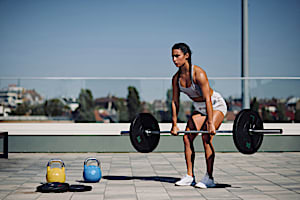
When it comes to fitness programs for women, one size definitely does not fit all. Health coach and researcher Sohee Lee, CSCS, CISSN, knows that the key to a successful fitness journey involves finding the right tools and strategies for each individual.
In this free-to-read chapter from Eat. Lift. Thrive., Lee prescribes the right steps to help women create their own programs that not only address key fitness goals, but consider factors including time constraints, equipment availability, injuries, and more.

Fitness professionals know that exercising better means exercising smarter. In his book Smarter Workouts: The Science of Exercise Made Simple , fitness expert Pete McCall explains the effects of correct exercise and offers practical workouts that focus on mobility training, core strength, and metabolic conditioning.
In this sample introductory chapter, McCall sets physical trainers up for success by examining fundamental beliefs about strength conditioning through a scientific lens, exploring the impact that correct—and incorrect—exercise can have on muscle fibers, fascia, the skeletal system, and more.

The journey to full fitness requires more than just strength and power. The best strength training programs are accompanied by attention to mobility and flexibility as well. In Stretch to Win, Ann and Chris Frederick offer the tools, stretches, and instruction to create an effective flexibility program for any sport or activity.
In this provided introductory chapter, the authors map out ten principles for optimal flexibility, part of the established Stretch to Win system designed to help increase mobility, power, speed, agility, range of motion, and overall performance.

Different sports require different strength and conditioning programs, to both heighten an athlete’s performance and protect against injury. As one of Human Kinetics Library’s series of sport-specific training resources, Soccer Anatomy , by Donald T. Kirkendall and Adam L. Sayers, offers 95 specific exercises with step-by-step directions and anatomical illustrations designed for soccer players.
Click here to read this sample chapter about injury prevention programs conceived and approved by The Fédération Internationale de Football Association (FIFA).

High-Intensity Interval Training (HIIT) is an effective technique for achieving maximum strength results in minimal time. For those professionals offering conditioning programs for women, fitness veteran Irene Lewis-McCormick’s The HIIT Advantage: High Intensity Workouts for Women offers an authoritative guide to this method of burning fat and improving performance, and is accompanied by a video library with demonstrations of 24 key exercises and an original 30-minute workout.
Read Lewis-McCormick’s introduction providing an overview of HIIT, explaining its background and benefits.
Then, watch the videos on Burpees, Cycle Lunges and Speedskaters to see Lewis-McCormick’s HIIT expertise in action.

Increasing strength means more than pushing heavy weights around. In particular, fitness devotees know that integrating yoga into their regimen helps boost overall strength, flexibility, and focus. Power Yoga: Strength, Sweat, and Spirit is your guide to unlocking the benefits of regular yoga practice, offering dozens of warm-up, power, peak, and cool-down poses designed for maximum effectiveness.
Read this sample chapter to learn how power yoga can be added to existing sport and conditioning programs to help your athletes increase their fitness and performance.
Sports are deeply embedded in the fabric of society, whether we’re playing on the field, cheering our team from the sidelines, or watching an event on television. This month, Human Kinetics Library presents selections analyzing sports and exercise through a societal lens: from the journey towards diversity, equity, and inclusion in sports, to the role of social class in athletics and physical activity, to the cultural responsibilities of sports broadcasters.
Explore these resources, including new arrivals offered as part of Human Kinetics Library’s 2024 Annual Update, and gain insight into how sports continue to influence and shape our social perspectives.

As the topic of diversity, equity, and inclusion continues to grow in importance across the social landscape, Diversity, Equity, and Inclusion in Sport provides a comprehensive examination of DEI issues across the sport industry. In the first chapter of this formative text from Human Kinetics, authors Algerian Hart and Ellen J. Staurowsky introduce readers to the terms diversity, equity, and inclusion within the context of sports, and analyze how events from 2020 onward have sparked a racial reckoning within sport organizations.

Studying the relationship between society and sports means addressing a broad range of factors, including the impacts of income disparity, social diversity, and changing cultural beliefs about fitness. In this sample chapter from Sociocultural Issues in Sport and Physical Activity, authors Robert Pitter, David L. Andrews, and Brandon Wallace examine how social class influences participation in physical activity and considers how income, status, habitus, culture, and lifestyle ultimately shape physical health and well-being.
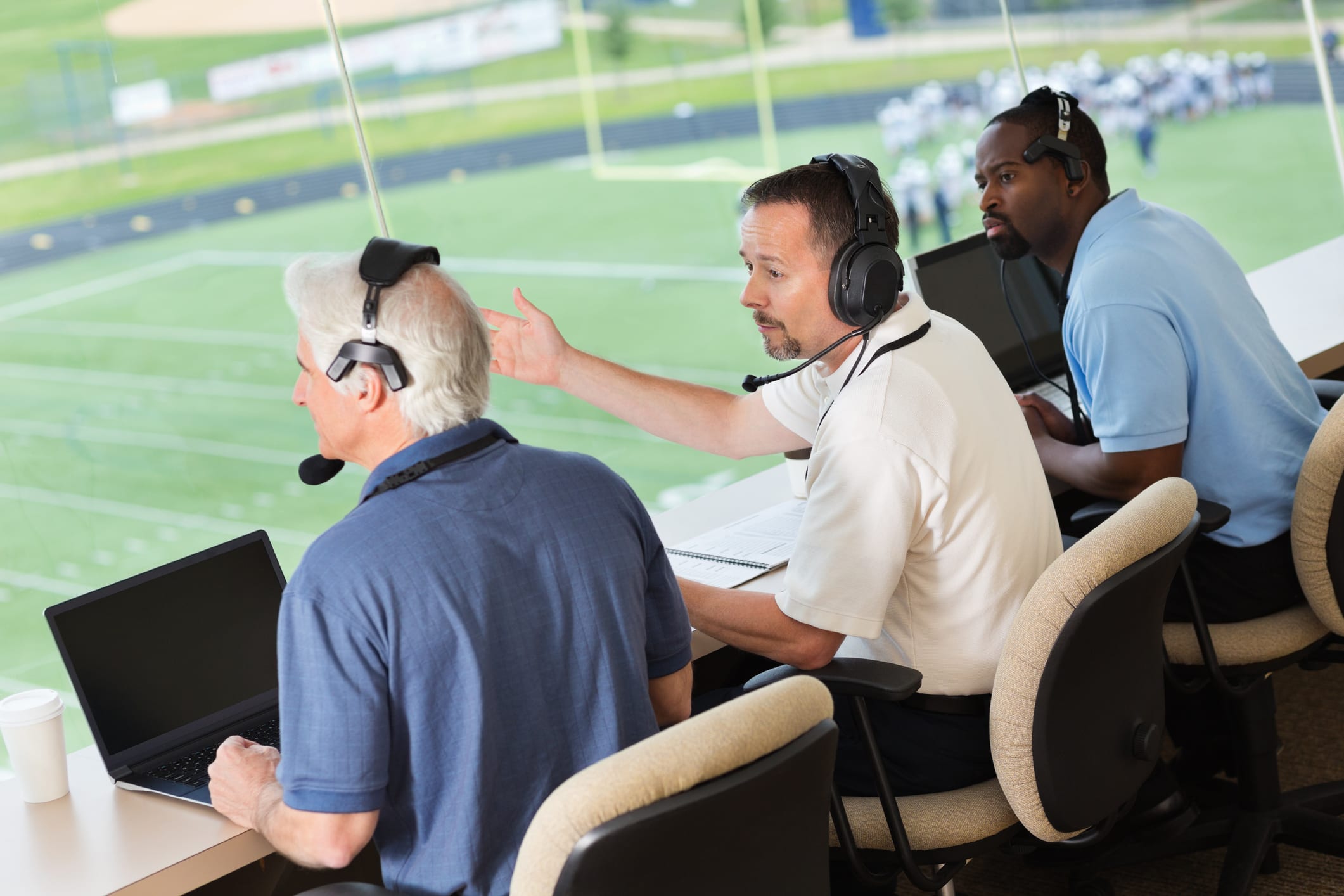
When we watch broadcast sports, we come together as fans, audiences, and communities. In his book Sports Broadcasting, author Kevin Hull gives readers a tour through the history of the industry and offers insight into how sports broadcasting works, as well as how it continues to change. This provided chapter, “Issues and Ethics in Sports Broadcasting,” analyzes the social and cultural responsibilities of the industry, including the importance of telling stories of athletes from diverse backgrounds and the difficulties faced by women, people of color, and members of the LGBTQ+ community who seek success in the field of sports broadcasting.

The pursuit of equality in physical education requires a commitment to act on behalf of all students. Critical Race Studies in Physical Education, by Tara B. Blackshear and Brian Culp, presents eight case studies examining the experiences of Black students and teachers as they navigate racism and seek an end to discrimination. This provided selection describes the challenges of a Black gay student facing down racist and homophobic treatment from coaches, teammates, and spectators.

For readers and researchers seeking to understand the impact of sports on society from a scholarly perspective, Fundamentals of Sociology of Sport and Physical Activity offers a thorough and accessible starting point. In this sample chapter , authors Katherine M. Jamieson and Maureen M. Smith examine how sports and physical activity shape the major spheres of life, including economy, family, education, media, and politics.
From archery to gymnastics to table tennis, the summer Olympics gives athletes the opportunity to demonstrate their expertise on a world stage. But the influence of the Olympic Games reaches far beyond the athletic spotlight, into social, economic, political, and personal territories. Before choosing your favorite Olympic sports to watch this summer, read these cross-disciplinary excerpts from Human Kinetics Library and learn more about the games and the influence they have had on the world since they began in ancient Greece.

While the earliest Olympic Games were religious and athletic festivals with participation limited to Greek city-states, they later evolved to become international events drawing competitors from around the world. Today, the games are one of several international competitions that make global impact, including the World Cup, the Wimbledon tennis tournament, and the Tour de France bicycle race.
This chapter from the cross-disciplinary text History and Philosophy of Sport and Physical Activity traces the history of international sports with a focus on the Olympic Games themselves: the revival of the Olympics as a worldwide event in the late 1800s, the evolution of the philosophy of Olympism, and the globalization of modern sport.

From Barcelona to Beijing, cities around the world vie for the opportunity to host the Olympic Games; and the games themselves make an indelible impact on those locales for years to follow. Sport and Public Policy: Social, Political, and Economic Perspectives is the only text that examines some of the most compelling policy issues affecting the sports world from perspectives that include economics, history, politics, and philosophy.
Read this chapter about the political economy of the Olympic Games, and how the event contributes to both a city’s urban revitalization and the global economy

Many say there’s no greater test of will and endurance than training for the Olympic Games; and with that commitment to excellence comes extraordinary pressure to succeed. As a result, even the best coaches and athletes can overtrain past the physical and emotional breaking point. Overtraining Athletes: Personal Journeys in Sport examines the complex subject of overtraining from different perspectives, helping athletes, coaches, parents, and sport science professionals understand the dangers as well as preventive steps.
This chapter gives readers a firsthand testimonial from a former Olympic triathlete who describes the powerful allure of the gold medal, and how the journey to win it can become all-consuming.

If it’s true that an athlete is only as good as their coach, then Olympic coaches are in an elite class of their own. But at all competitive levels, athletes deserve coaches who create positive environments, foster skill development, and build character.
In this chapter from Coach Education Essentials, coach and professor Cameron Kiosoglous explores coaching at the professional and Olympic levels, examining the complexities of guidance and leadership within these high-intensity contexts and lending insight that will change the way you watch the summer games.

At every competitive level, coaches, managers, and athletes are called upon to understand the ethical and moral issues of their sport. This latest edition of the fundamental text Ethics in Sport presents readers with the complex challenges involved when working in the competitive field.
In the world of professional and Olympic sports, the spectre of doping continues to require careful oversight. Read this chapter about the roots of anti-doping policies to learn about how the controversy has altered the landscape of the Olympic Games.
Physical education classes empower students far beyond their ability to climb a rope or make a goal; they can also help students gain a greater sense of personal and social responsibility. This month, Human Kinetics Library offers free-to-read selections from experts examining how physical education and fitness classes can integrate Teaching Personal and Social Responsibility (TPSR) to help students strengthen skills that will stay with them throughout school and into adulthood.
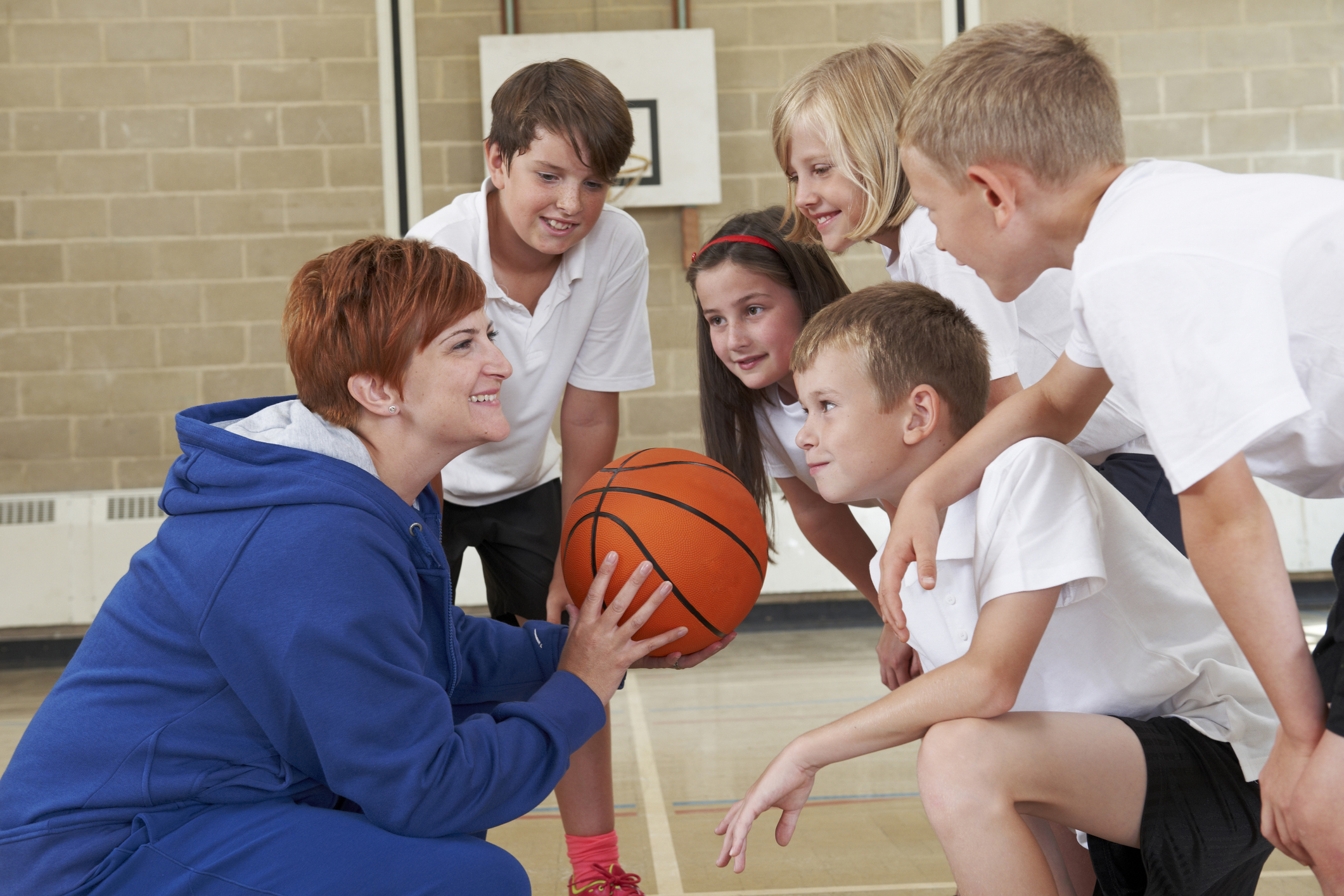
Physical education classes are an ideal environment for shaping and developing a child’s character. In the updated third edition of his formative book Teaching Personal and Social Responsibility Through Physical Activity, education professor Don Hellison gives teachers and coaches strategies for using physical activities in classes, alternative schools, and afterschool programs.
In this section, Hellison presents his TPSR framework, ideal for educators who wish to deepen the significance of physical education for students.
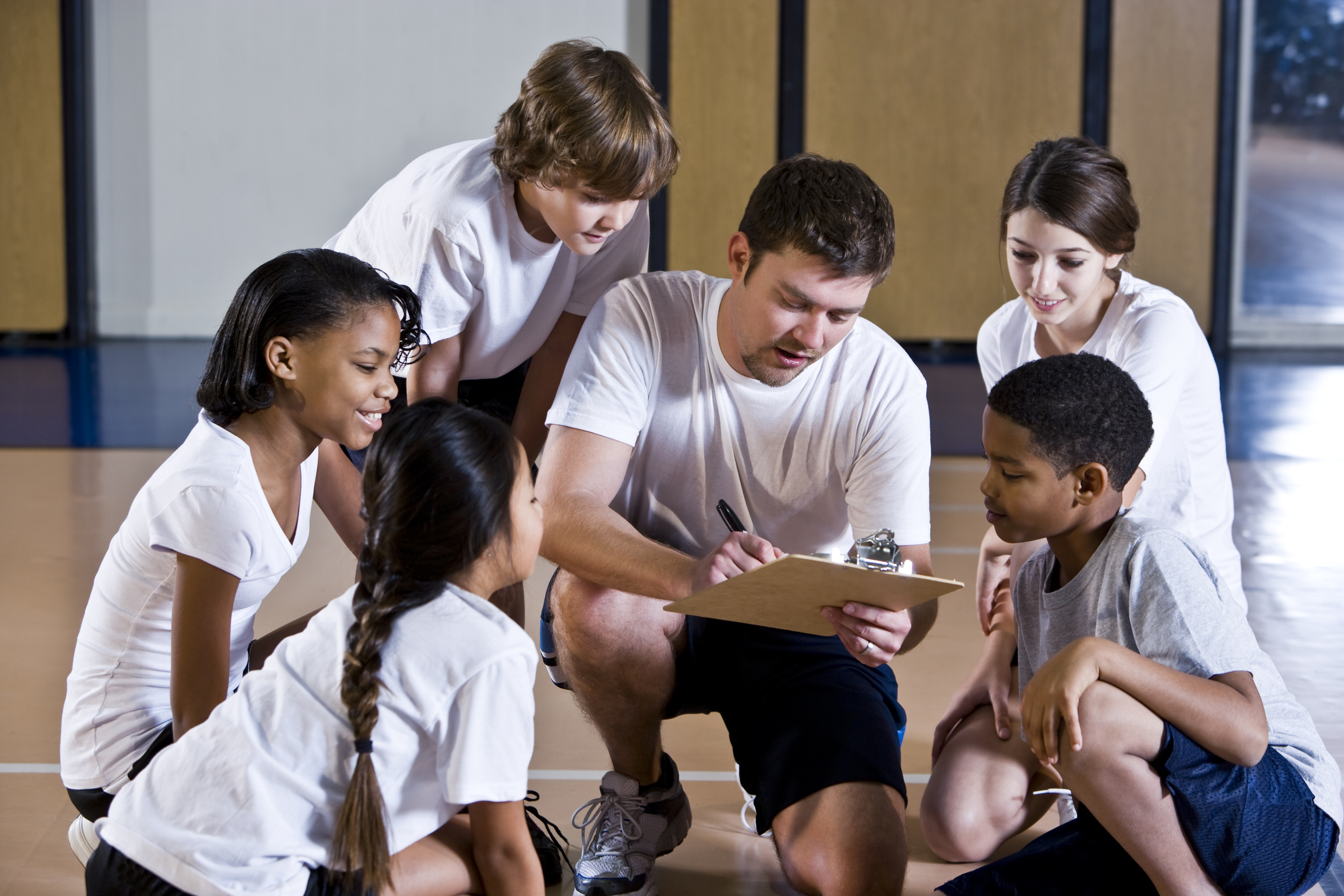
A successful character-building program requires a positive learning environment where students feel safe and supported while facing challenges. In this chapter from their book Using Physical Activity and Sport to Teach Personal and Social Responsibility, authors Doris L. Watson and Brian D. Clocksin offer pedagogical and practical guidelines for creating a positive learning environment where all students can flourish, even in the most competitive of sports.
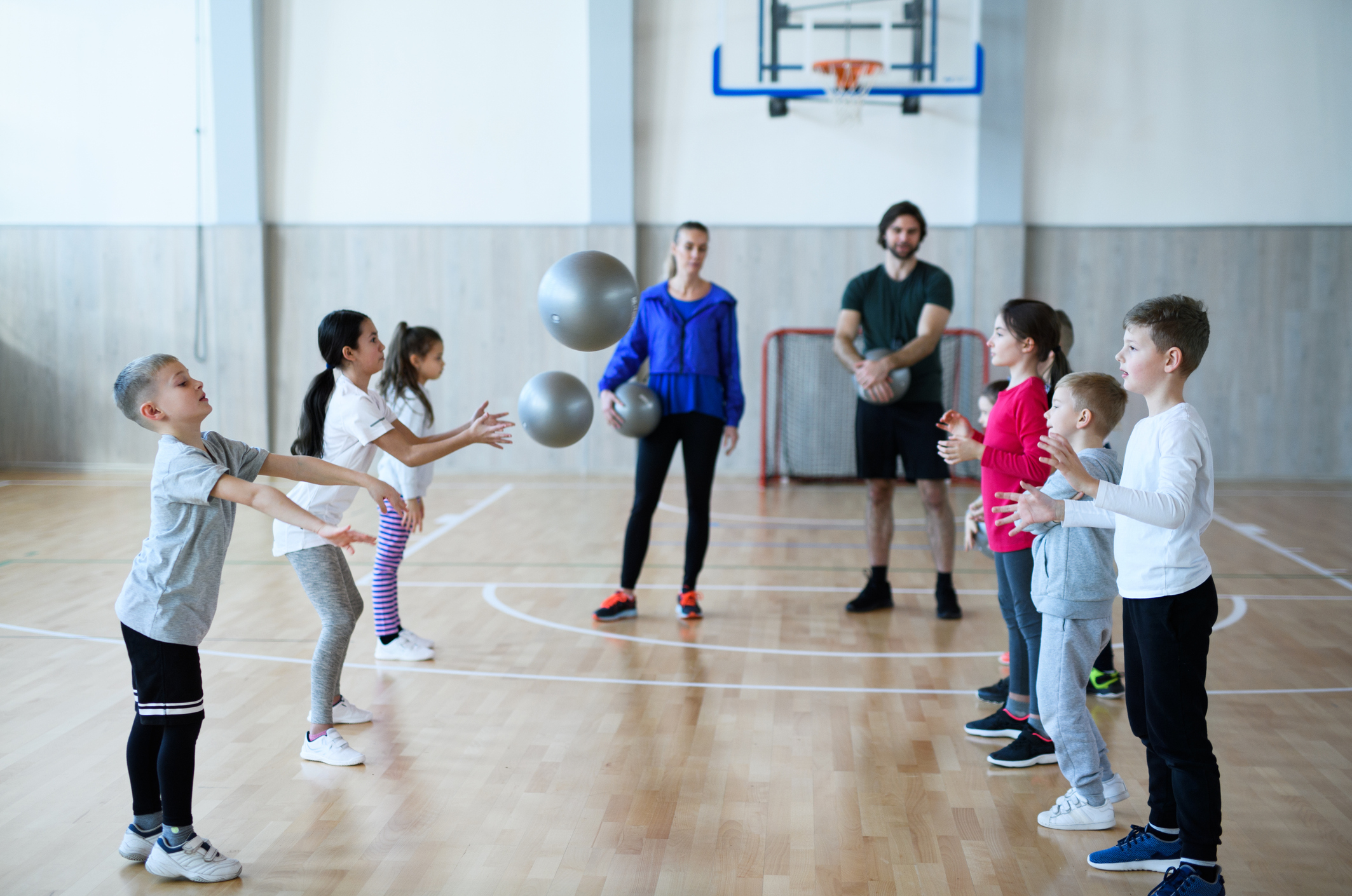
Gameplay can be an effective way to help students of all ages understand the importance of fair and equal treatment. In her book Playing Fair, expert Joy I. Butler offers teachers new strategies embracing the Teaching Games for Understanding (TGfU) approach to help students learn fundamental concepts of social justice.
Read this provided chapter in which Butler demonstrates how educators can use subtle guidance to help students create rules for their own games while learning about fairness, responsibility, and cooperation.
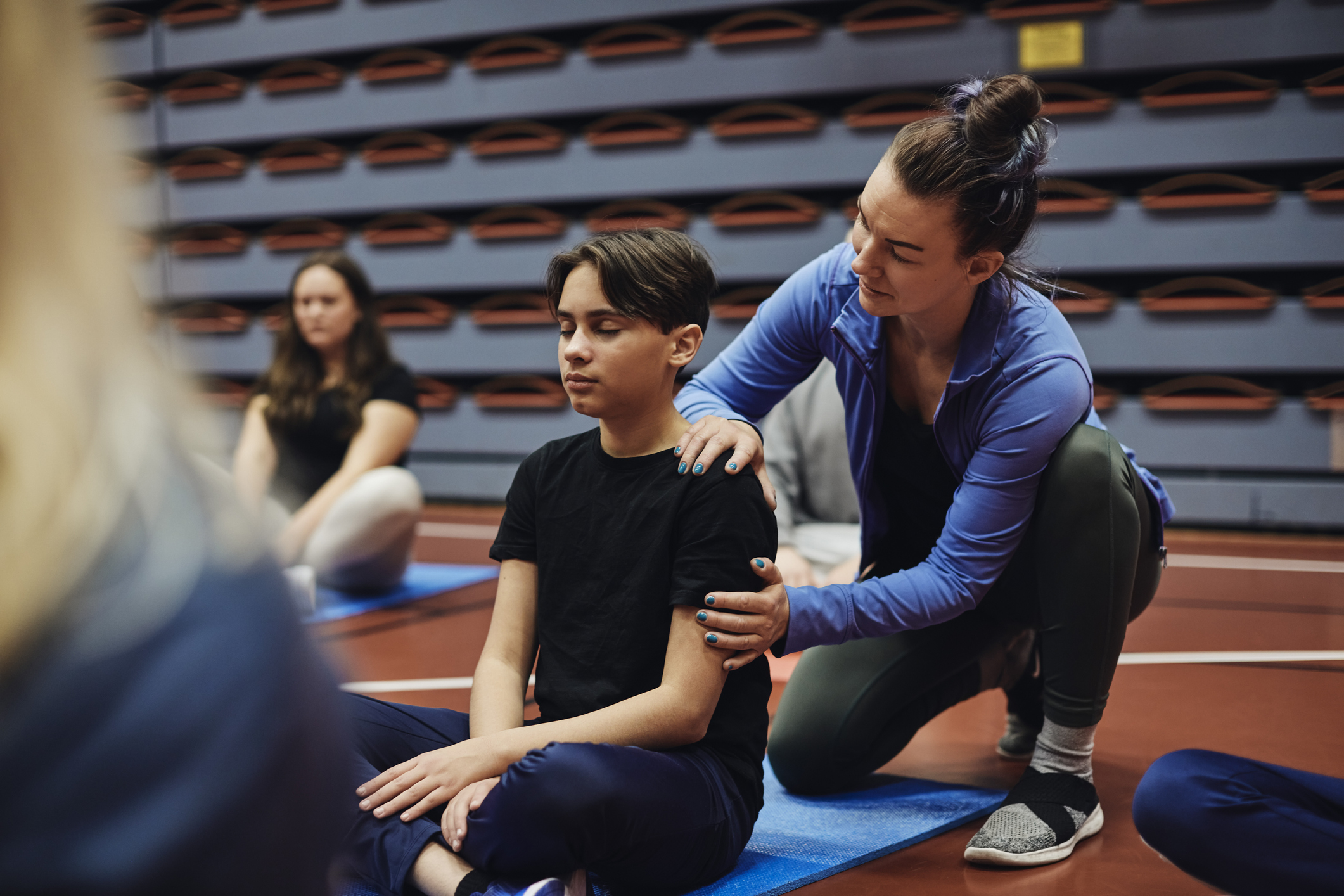
A valuable fitness education course helps students strengthen both physical and emotional health. Physical education experts Jayne D. Greenberg, Nichole D. Calkins, and Lisa S. Spinosa present readers with a fully-loaded toolkit to help teach fitness for the whole student in their book Designing and Teaching Fitness Education Courses: Innovative Ideas and Practical Solutions for Secondary Schools.
In this chapter, the authors illustrate how teachers can incorporate social and emotional learning (SEL) into their fitness education programs, helping students discover the psychological benefits of a physically active lifestyle.
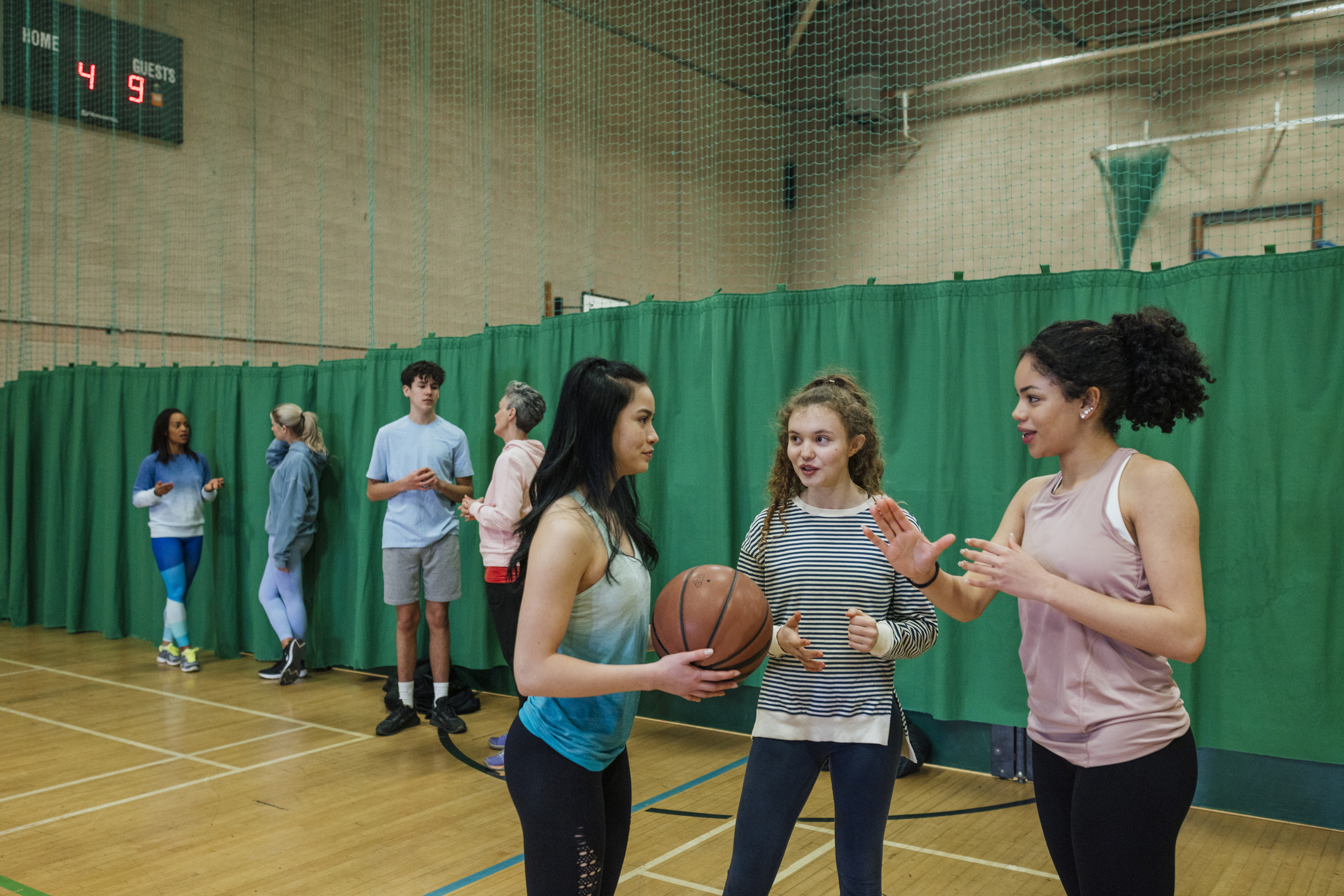
Teaching personal and social responsibility is one matter; assessing and evaluating it is another. The final chapter in Don Hellison’s book Teaching Personal and Social Responsibility Through Physical Activity offers creative and effective ways not only to establish TPSR assessment criteria at the end of a course, but help students take an active role in the process itself, including self-evaluation that helps builds awareness and strengthen character.
Injuries may be an unavoidable part of athletics, but the right knowledge can help coaches and practitioners provide the best treatment for athletes and minimize future risk.
Scroll down to discover selections from the Human Kinetics Health Care in Sport and Exercise collection, a library of digital titles and videos providing instruction for specialized care from corrective exercise and training to injury prevention, treatment, and rehabilitation.
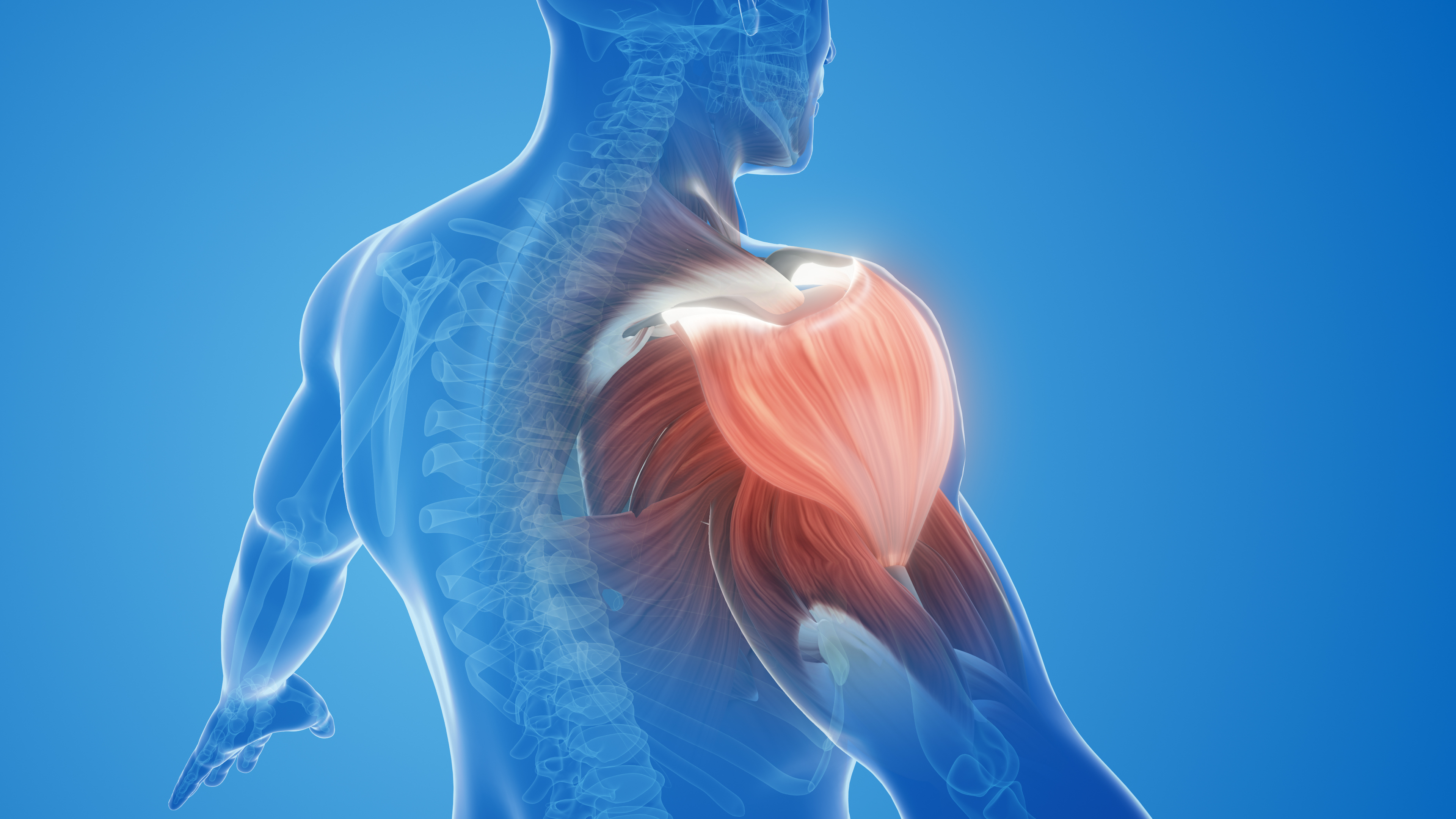
The best way to avoid injury is to practice smart prevention. Authors David Potach and Erik Meira help coaches and instructors protect their athletes during training and competition with Sport Injury Prevention Anatomy, a practical, illustrated guide examining why injuries occur, how to identify risk factors, and how to proactively address the risk of injuries such as ACL tears, shoulder instability, and ankle, hamstring, and low-back strains.
In this provided chapter, Potach and Meira offer guidelines for designing injury prevention programs that help the body adapt to ranging challenges and reduce risk.
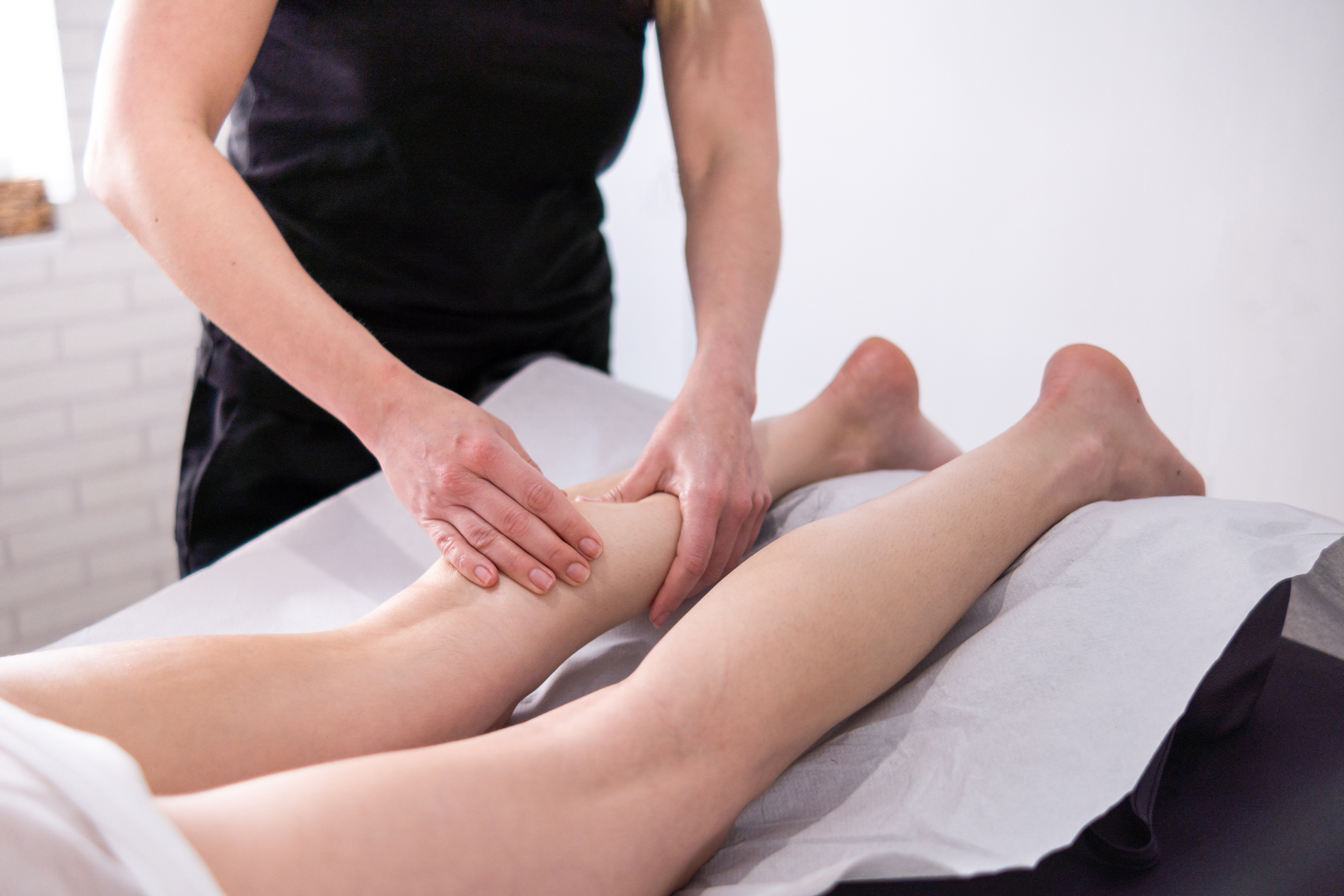
When it comes to common soft tissue injuries, massage can serve as effective treatment if administered correctly. In Sports Massage for Injury Care, sports therapist Robert McAtee provides authoritative instruction for practitioners including assessment and evaluation, recommendations, treatment options, and injury-specific protocols.
Read this provided chapter in which McAtee covers key principles of pre-massage assessment.
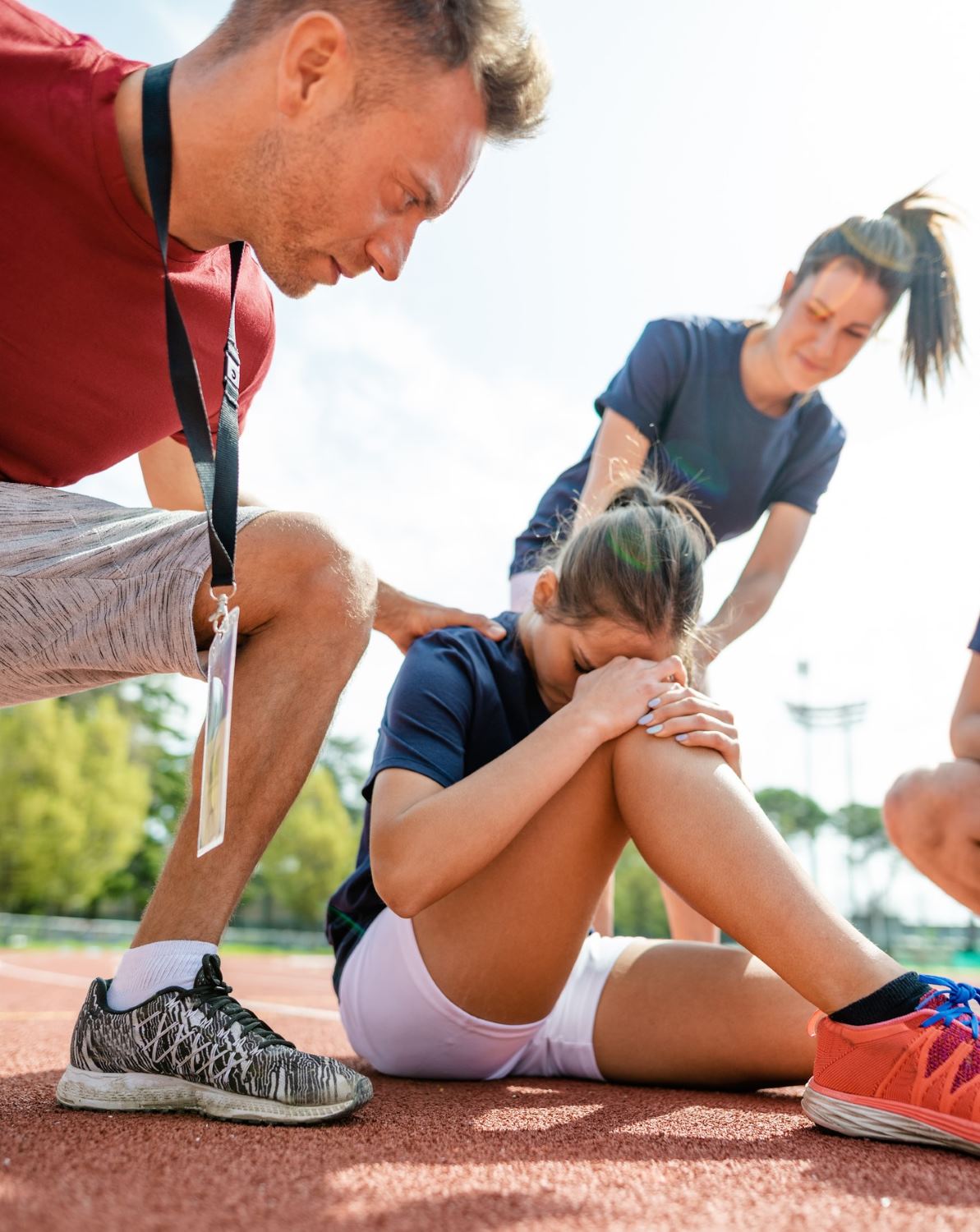
From a gymnast hiding ankle pain so she can compete to a basketball player who withdraws from friends after a season-ending injury, it can be argued that every sport injury carries psychological as well as physical effects. Psychology of Sport Injury presents sport injury within a broader context of public health and offers insights into how psychology may affect athletes, including risk culture, resistance to rehabilitation, difficulty returning to competition, and more.
In this chapter, authors and professors Britton W. Brewer and Charles J. Redmond explore the foundations of sport injury, addressing biological, psychological, and social perspectives.
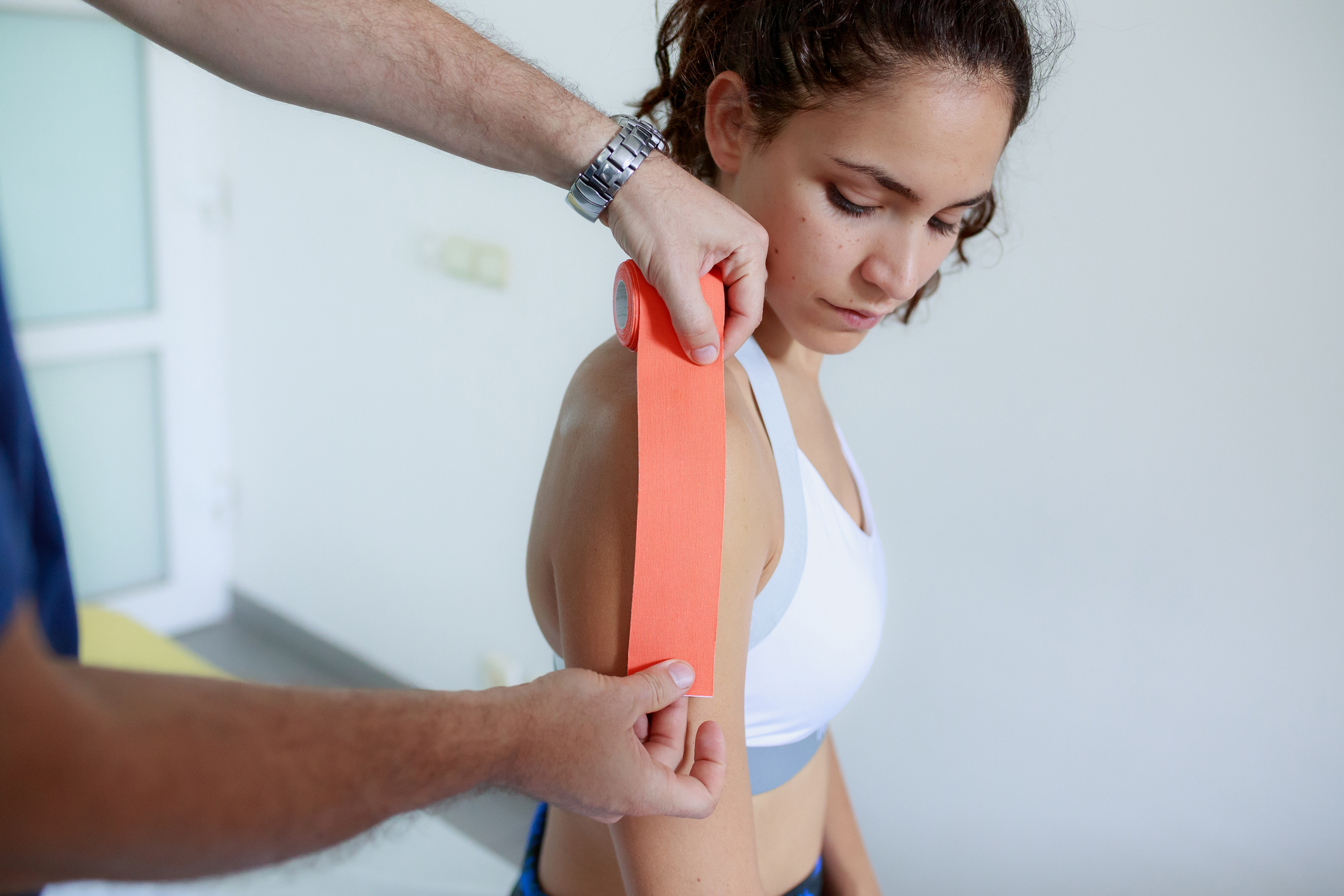
There are right and wrong methods for taping injuries, which can make the difference between an athlete returning to their sport or spending more unnecessary time on the sidelines. Strap Taping for Sports and Rehabilitation presents 50 taping techniques for use on all body areas in both physical therapy and modified athletic training.
In this provided chapter, author and physical therapist Anne Keil offers an introduction to taping, addressing the relationship between taping and anatomy, different types of tape, and application guidelines.
After reading the chapter, view this sample from the book’s companion video series, presenting guidelines for taping an anterior shoulder dislocation.
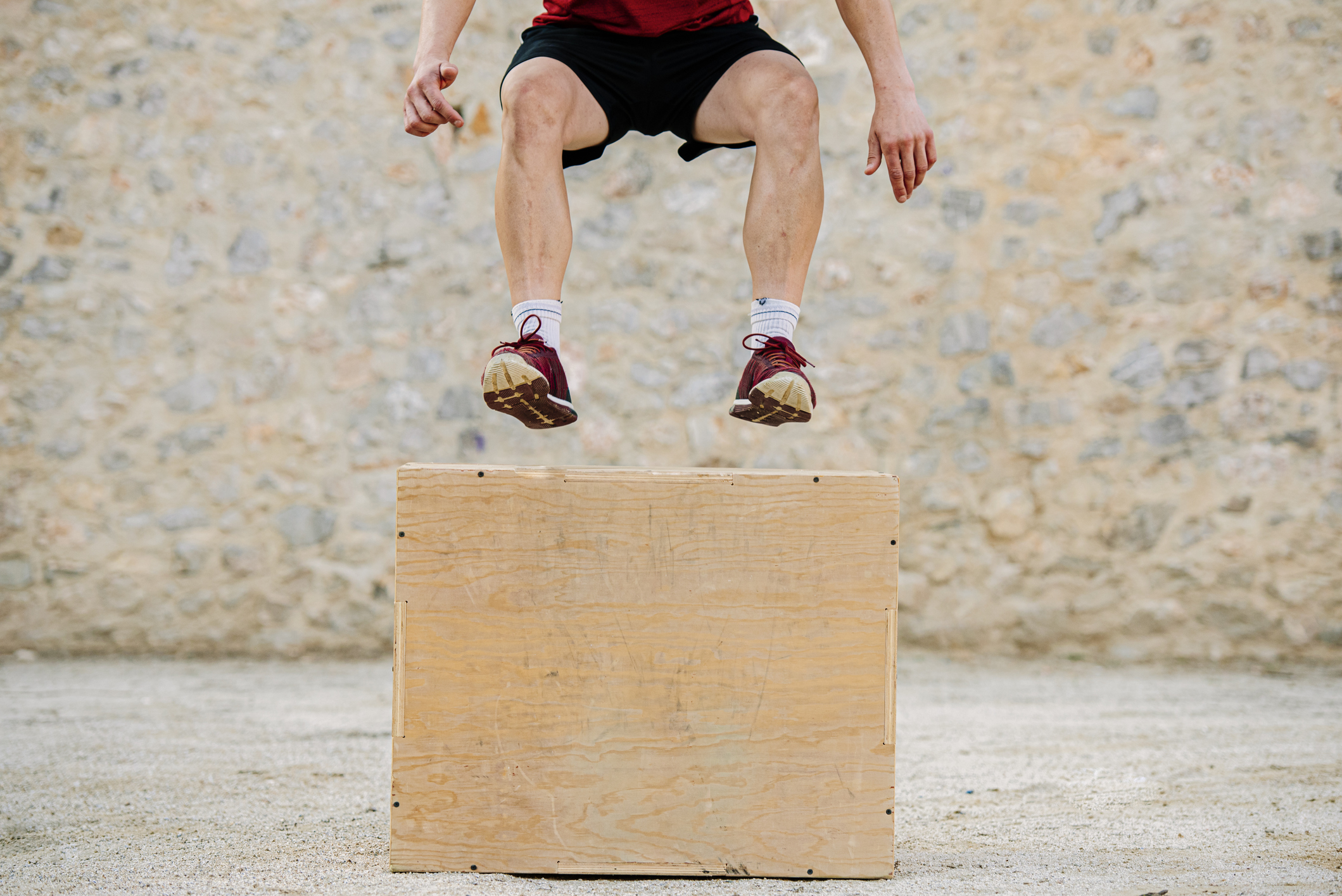
Elite players, coaches, and trainers rely on plyometrics to improve quickness, speed, jumping ability, balance, and overall performance. But plyometric methods can also help recover from injuries. In this sample chapter from their book Plyometrics, authors Donald A. Chu and Gregory D. Myer present guidelines for plyometric rehabilitation, including illustrations for specific motions that can help athletes recover endurance and agility.

Basketball is a stochastic, intermittent high-intensity sport. It is characterized by periods of high aerobic oxidative and anaerobic glycolytic demands, continuous changes of direction that challenge the neuromuscular system, including accelerations and decelerations, jumps, sprints, physical contact, and sport-specific skills. Learn more about the application of high-intensity training to basketball performance, or view a short clip demonstrating the human movement of shooting in basketball.
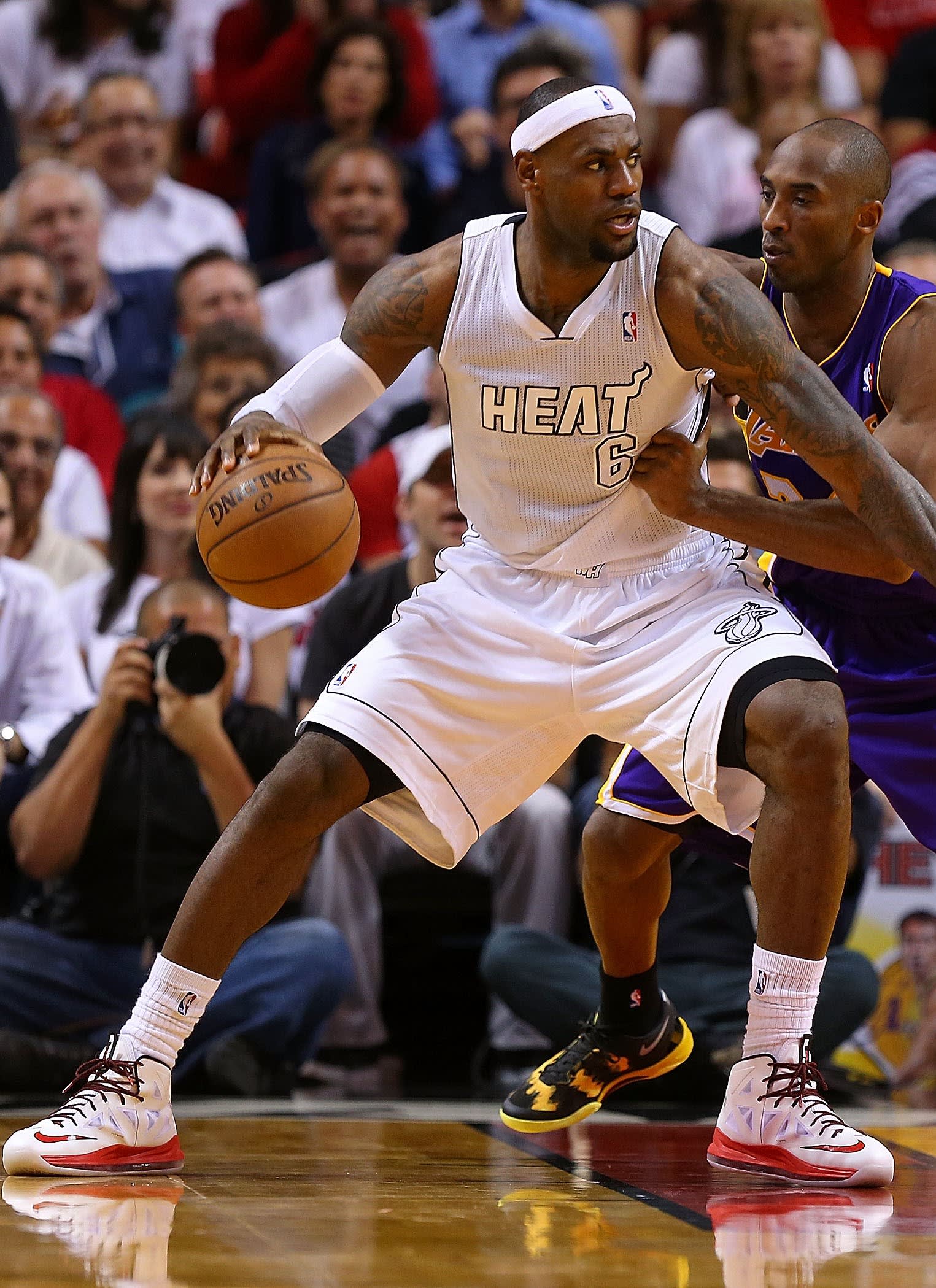
LeBron James’ intensity, skill level, and control are legendary. Many researchers have described this high-performance state as ‘flow’: the ability to pursue a goal and become immersed, without conscious awareness of the goal, objective or need to apply skills. Learn more about LeBron James, the concept of ‘flow’ and the harnessing of inner strength.
The story of Michael Jordan’s celebrated rise to greatness is characterized by rigorous practice. One of the most celebrated basketball players of all time, Jordan was cut from his high school basketball team but refused to let this set-back deter him. Jordan’s perseverance and focus on perfecting his technical and tactical skills propelled him to professional excellence. Learn more about expert performance in sport.
Much-missed basketball superstar Kobe Bryant described how the training he underwent as a youth contributed to his later success. Instead of an environment that over-emphasized competitiveness, he benefited from a training culture that prioritised skill development such as ‘fundamentals, footwork, spacing, back cuts’. Learn more about best practices for developing young athletes’ readiness for competing in sport.

Sport is universal. It provides common ground for societies around the world through the compelling performances of many differently-abled participants. Wheelchair basketball is the most played disability sport in the world: it has featured at every Paralympic Games since 1960 and is also commonly played at club and recreational levels. Learn more about designing wheelchair basketball programs and promoting inclusion.
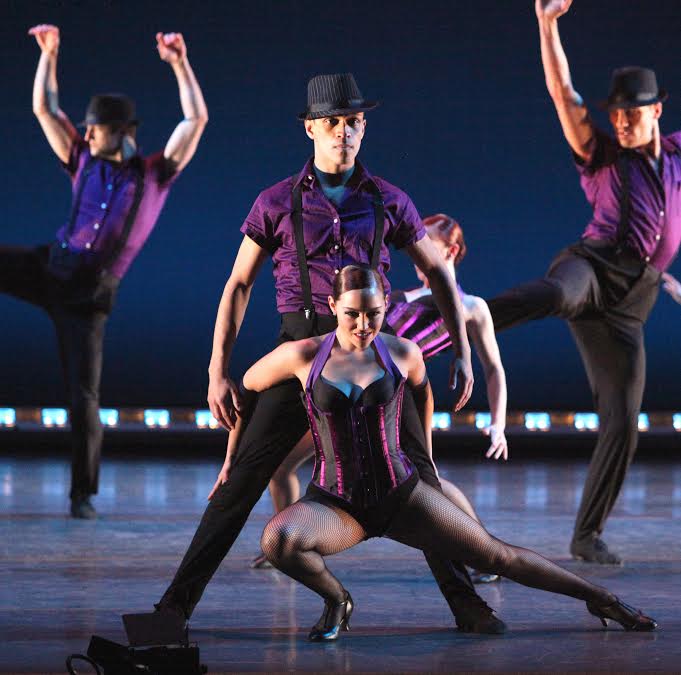
The rich history of jazz dance parallels the social, economic, and political history of the United States from the early 1900s to today. In this chapter you will learn how jazz dance grew from West African roots into a performing art, supported along the way by a fascinating list of artists, dancers, and choreographers. Understanding jazz dance history helps you realize the connections between the varied expressions that jazz dance takes, as well as the vital connections that exist between the figures, personalities, and every jazz dance student.

Beginning Musical Theatre Dance introduces students to basic musical theatre dance techniques from a variety of genres, forms, and styles and explains how to put them into practice for performance on stage. Accompanying instructional video clips help students practice and review musical theatre dance forms, techniques and adaptations. Click here to watch a video clip of precision style choreography in the style of musical theatre.

As with any physical activity, dance related injuries sometimes occur. Understanding safety precautions along with basic movement, nutrition, and anatomy can help you prevent many of those injuries. This chapter from Beginning Tap Dance examines studio safety, including creating the best environment to minimize joint and muscle stress and keeping the studio free of injury-causing obstacles. Basic anatomy, proper alignment, nutrition and hydration are also addressed to further assist understanding of injury prevention.

Beginning Ballet introduces students to the study of ballet as a performing art and provides instructional support in learning foundational ballet technique. The book features an audio glossary which explains key terms such as échappé sauté and rond de jambe à terre, as well as images demonstrating basic positions, barre exercises, and centre combinations. Whether you are learning an arabesque a terre or a coupe devant, this collection will provide clear instruction to help guide your dance practice.

A dance exists only in the mind of the choreographer and as a rehearsal exercise until it is performed. However, bringing a dance performance to fruition requires long-range planning and a number of intermediary steps. Planning a dance performance can be a daunting task, but it is possible to minimize the challenge by arranging the production process into a series of smaller, more digestible tasks. From rehearsals and lighting, to props and sets, this chapter is your guide to staging informal concerts and lecture-demonstrations.
The first update to Human Kinetics Dance Technique provides access to 21 additional titles from Human Kinetics’ market leading list and accompanying video and audio content that supports students developing their dance technique, and also provides instructors with valuable teaching tools that can be implemented within their curriculum.

The new update collection for Human Kinetics Dance Technique includes a wealth of material designed to support teachers and instructors of dance. Lesson Plans for Creative Dance by Sally Carline offers 28 age-appropriate dances based on Laban movement concepts that help to both teach and assess students, and provides a progression of learning that creates a rich, extended experience for students. Anne Green Gilbert’s Brain-Compatible Dance Education, Second Edition strikes the perfect balance between hard science and practicality, making it an ideal resource for dance educators working with dancers of all ages and abilities, while Careers in Dance spotlights entrepreneurship and leadership opportunities for dancers, delving into an array of options and offering much-needed advice.

The content collection will be accompanied by 37 fully cross-searchable videos which provide an innovative multimedia experience for users. Eric Franklin’s Conditioning for Dance, Second Edition features portable whole-body workouts that use elastic bands to increase strength and aerobic conditioning for dance, and a personal conditioning program you can use to monitor your conditioning development to support your performance, while the instructional videos accompanying Brian-Compatible Dance Education provide great teaching aids that show you real-world examples of dance movements. Anne Green Gilbert's Creative Dance for All Ages provides videos that demonstrate the lesson plans and teaching strategies and how to put them to work in the classroom. Click here to see an example of her instructional techniques in action.

In addition to supporting videos, the Human Kinetics Dance Technique collection also offers a rich collection of audio clips which enable a dynamic learning experience, and provide dance instructors with invaluable teaching tools to engage and inspire students. Nola Holland’s Music Fundamentals for Dance includes extended learning activities and support materials that combining music skills with dance and uses music clips to offer ready-made examples of dance choreography which students can use in applying concepts from the book. Eric Franklin’s updated Dynamic Alignment Through Imagery expands on the classic text and offers audio files for dynamic imagery exercises which enable users to discover their natural flexibility and quickly increase their power to move. Click here to listen to a sample of these exercises.

From writing about dance as part of course assignment, to promoting wellbeing and supporting professional careers in dance, the new Human Kinetics Dance Technique collection includes practical material to support students, educators and instructors alike. Safe Dance Practice takes a multidisciplinary approach to the components of dancing safely, integrating principles without compromising dancers’ artistic creativity and expression, while Dancer Wellness provides theoretical concepts, practical information and applications that dancers can use to enhance their health and wellness. Alternatively, if you are a dance educator or student seeking to engage in public scholarship in dance and want to ensure your work receives the attention it deserves, Public Scholarship in Dance is the resource for you.

Diana Green’s Choreography From Within and Justine Diane Reeve’s Dance Improvisations allows students to learn, explore, and create based on their own unique styles while also providing expert instruction for educators in planning, teaching, and assessing students’ routines. Attention and Focus in Dance takes a more mindful approach to dance, helping dancers hone the skills of attention, focus and self-cueing to replenish energy and enhance their physical and artistic performance, while Breathing for Peak Performance outlines the anatomy of breathing, and how to improve your breathing function to benefit health and improve performance.
Discover the outdoors through this carefully curated collection of ebooks exploring key topics such as environmental stewardship, environmental hazards, the mechanics of walking, and more.

While hiking can be low intensity outdoor activity it can still have an impact on the environment. Soil compaction and vegetation trampling are the most common impacts to the back country and can occur after as little as one night of use. Recreation ecology works to identify, document and mitigate the effects of outdoor activities such as hiking and provide a scientific basis for management. Click here to find out more about the impact that outdoor recreation can have on all aspects of the natural environment, from vegetation and soil to water and wildlife.

In Risk Management in Outdoor and Adventure Programs Aram Attarian describes the role new technology can play in recreation activities. Access to the appropriate equipment can play a significant part in the success or failure of outdoor programmes and have become important tools for adventurers and guides, as well as search and rescue teams. Click here to find out how a personal locator beacon (PLB) saved the life of a hiker stranded in Big Bend National Park, USA.

For many hikers, there exists a reluctance to extend day walks into overnight trips because of the unknown elements. In this chapter, Daniel L. Chase seeks to quell these anxieties by outlining the fundamental skills and techniques that can be applied to overnight hiking. Written to aid teachers and tour leaders preparing students who are new to the activity, Chase provides a step by step guide to planning a safe and enjoyable overnight hike, from hazard evaluation and basic first aid, to outdoor ethics and equipment packing.

Bipedal walking is a primary form of human locomotion. This action of putting one foot in front of the other, at a relatively constant speed, is no trivial task. Indeed, scientists and engineers have spent millions creating robots that can perform the feat of walking. This chapter from Biomechanical Analysis of Fundamental Human Movements explores the mechanics and biomechanics of walking, stance, pressure and recovery, with highlighted calculations and examples to aid independent research.

Guides and outdoor programme providers cannot control natural environments, however it is important to be able to identify and successfully manage these potential hazards. The most effective protection from such natural phenomena comes from experience and education, combined with appropriate equipment, skill, and tactics. Click here to learn how to minimise objective dangers and explore case studies of common hazards that outdoor leaders may encounter.
Celebrate the kicking-off of the international soccer season with this carefully curated selection of titles exploring key topics relating to the beautiful game.

As a sport that invites global investment, attention, and participation, soccer has stakes that reach far beyond the boundaries of the pitch. As a result, the study of international relations can provide key insights into understanding the international characteristics of soccer as a sport, as well as in debates concerning relations between sport and so-called global society. Over the past few decades, sport has moved up the political agenda nationally and internationally, and awareness has grown of the role of sport in cultural and social life. In this chapter, you can read more about the significance of soccer, and sport more broadly, on the global socio-political stage.

In soccer, as in all sport development and training, as players climb the ladder of performance, the gains become smaller and more infrequent. The demand for consistency and to stay in peak form increases, and the risk of deterioration or loss of fitness goes up because the demand is so high at the top level. This unfortunately leads to the one aspect of training that very few professionals like to address with aspiring athletes: injuries. In this chapter, find out how to keep players game-ready, with detailed information on avoiding some of the most common soccer injuries as well as step-by-step, position-specific training protocols for players returning from injury.

With the surging popularity of women’s soccer worldwide, the presence of women in the media relating to the sport has equally grown. But the history of the role of women working within the sports media industry is a long and complex one, raising issues of inequality and mistreatment in comparison to their male counterparts. As long as sports have been covered in the mass media, through magazine, radio, newspapers, television, or digital platforms, women have been helping to produce that coverage. In this chapter, learn more about the role of women in sports media in a historical context, the issues that affect women’s status in the sports media industry, and the connection between the status of female media professionals and female athletes in media depictions.

The popularity of high-intensity interval training (HIIT), which consists primarily of repeated bursts of high-intensity exercise, continues to soar because its effectiveness and efficiency have been proven in use by both elite athletes and general fitness enthusiasts. Surprisingly, few resources have attempted to explain both the science behind the HIIT movement and its sport-specific application to athlete training. HIIT can be utilised in the context of soccer to optimise player performance, particularly with focus on the development of aerobic power and endurance in athletes. Read more about the science behind HIIT, its applications in soccer, and the importance of physical performance in winning games in this chapter.
Learn more about the fastest-growing sport in the United States and improve your play with the Human Kinetics Library’s curated Pickleball content.

Belonging in the net and wall games category, pickleball is a divided court game whose primary intent, as for all net and wall games, is to get the ball in the court area more often than the opponents do. Pickleball was invented by two families via a recursive process of adjusting equipment, rules, and areas of play until this dynamic and exciting sport was born. Discover the history of pickleball in this chapter from the ebook Playing Fair.

How can playing pickleball help cultivate new and existing skills among students? In his chapter from Playing Fair, Tim Hopper provides an in-depth explanation of the techniques and benefits of pickleball for young players. The author outlines how developing an understanding of the tactical concepts and strategies behind the sport, as well as learning how to apply these concepts in game-based scenarios, allows players to engage in a form of negotiation and collaborative problem solving that reaches beyond the lines of the court.

Pickleball is a sport that requires flexibility and mobility. For pickleball players who wish to improve their fluidity of movement, the Lateral Glute Walk is a pilates exercise to help develop the glutes and hip abductors. Learn the correct technique in this chapter from Pilates and Conditioning for Athletes.

A volley is a shot hit in the air before the ball bounces. It is used as a return of a ball that travels close to the top of the net and that is usually hit with force. This could be a groundstroke, another volley, or a missed hit by the opponent. The volley is executed from a position just behind the non-volley zone, and it can be either offensive or defensive in nature. The ability to volley with strength and confidence is crucial to your success as a pickleball player. This chapter from Pickleball Fundamentals, provides a number of volleying drills to help your game become more well-rounded – such as the Toss and Volley drill.

A drop shot is hit off of a bounce from deep in the court. The object of hitting a drop shot is to give the team deep in their court – usually the serving team – the opportunity to follow up the shot to the non-volley zone line. When hit correctly, the ball will drop just over the net and land in the opponent’s non-volley zone, making it a challenge to return. This chapter from Pickleball Fundamentals provides a series of drills for players to practice performing and defending against drop shots, including the Throw and Drop Shot drill.
From game preparation to technical skills, this specially-selected collection of titles on American Football provides players of all levels with the tools to elevate their game. Explore the chapters below and discover insights and advice from expert coaches, players, and sport scientists.

Preparing for game day mentally is just as important as preparing for it physically; you must have a plan. Jay Norvell’s chapter from Complete Wide Receiver delves into the importance of game preparation and how investing time in film preparation and opponent analysis puts you a yard ahead on game day. Breaking down this process into concise and practical steps, this chapter serves as a key foundation for those looking to up their game. Click here to read Norvell’s chapter on Game Preparation.

Success can be measured in many ways. No matter how you measure it, either as a coach or as a player, the fact remains that as long as a score continues to be kept, winning will remain a vital part of success on the football field. In his chapter from Winning Football, Bill Ramseyer explores the different facets of what enables a team to compete consistently at the highest level; from a strong work ethic and mental toughness to communication and accountability. Click here to read Ramseyer’s chapter on The Elements of Success.

In Football Kicking and Punting, former NFL player Ray Guy and veteran kicking coach Rick Sang join forces to provide aspiring kickers and punters with expert instruction. From the fundamentals to advanced strategies, this text provides detailed technique instructions on field goals, extra points, and special plays through 46 proven drills, maximising practice time and ensuring improvement. Football Kicking and Punting also includes specialized warm-ups and conditioning programs, as well as game strategy preparation to enhance your game. Click here to read this chapter on Punting Fundamentals.
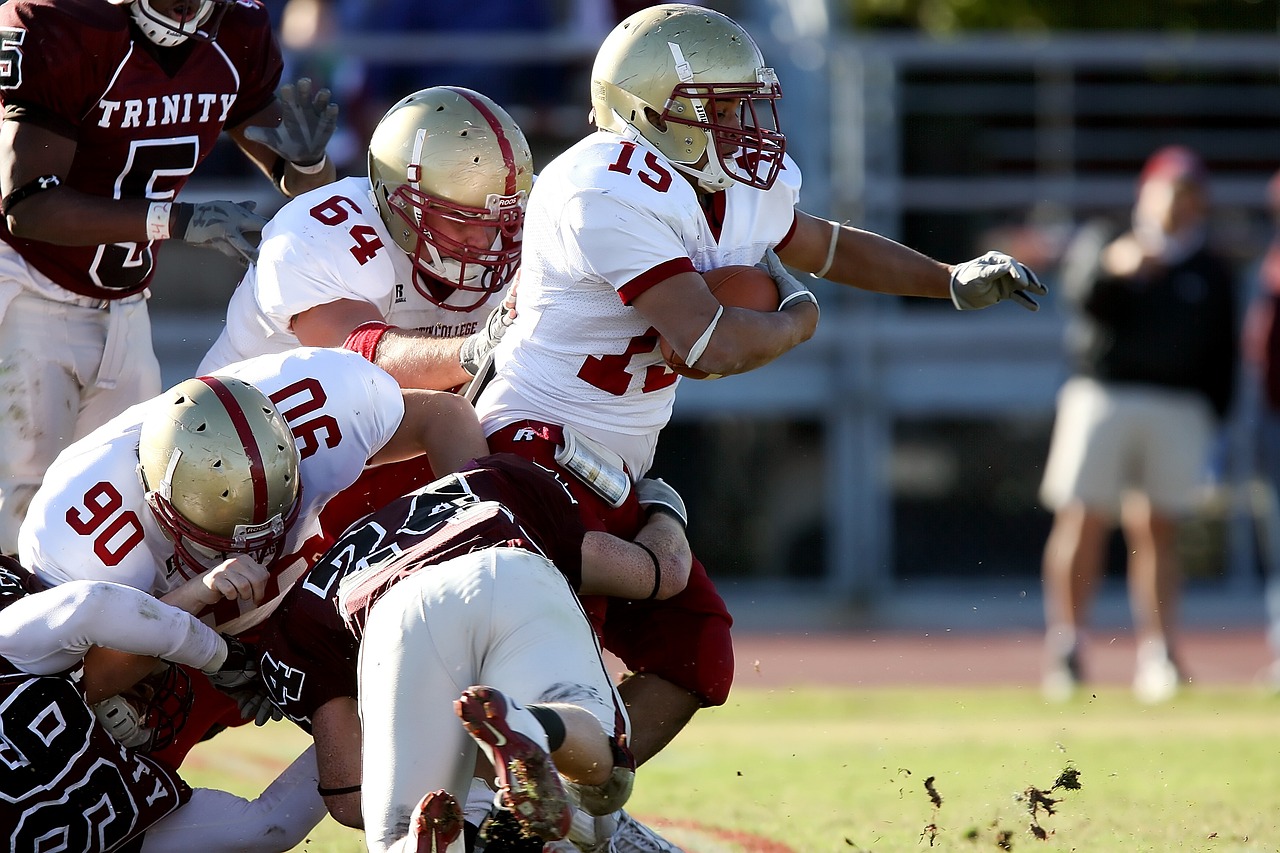
The popularity of high-intensity interval training (HIIT), which consists primarily of repeated bursts of high-intensity exercise, continues to soar because of its effectiveness and efficiency. In a chapter from Science and Application of High-Intensity Interval Training, Paul Larsen and Martin Buchheit turn their attention to how this training practice can be used to maximise performance in American Football. Offering a breakdown of the targets of physical performance in the sport for all field positions, as well as strategies for structuring a specially-tailored American Football training program using HIIT, this text provides a scientifically-proven and invaluable approach to training for the sport. Click here to read this chapter on the benefits of HIIT in American Football training.
No matter what time of year, swimmers at every level can enjoy health benefits from their time in the water. This specially-selected collection of titles offers advice for all swimmers, from the outdoor triathlete looking to increase strength and speed to the beginner seeking more confidence in the pool. Explore the chapters below and discover tips and insights from professional coaches, instructors, and swimmers.

Swim coaches and instructors know that swimmers must understand and apply the right technique in order to improve. In this chapter from Developing Swimmers (2011), award-winning coach Michael Brooks defines key benchmarks for assessing a swimmer’s potential and strengthening technique, both at the whole body level, and in the nuance of particular strokes. Click here to read Brooks’ chapter on Teaching Technique Effectively.

Freestyle is more than just the fastest competitive stroke; it’s fundamental for all swimmers looking to keep their bodies fit and flexible. In this chapter from his formative instructional guide The Swimming Drill Book (2017), United States Swimming (USS) coach Ruben Guzman presents practical tips for the freestyle stroke from body position, to breathing, to kicking and a strong two-arm coordination. Click here to read Guzman’s chapter on Freestyle.

It may sound obvious, but there’s a science to moving through water effectively. In The Science of Swimming Faster (2015), editors bring together coaches, athletes, trainers, and researchers to consider how scientific application can help competitive swimmers shave crucial seconds off their time. Click here to read a chapter by Timothy Wei, Russell Mark and Sean Hutchinson exploring Fluid Dynamics, Propulsion, and Drag.

Swimming in a marathon requires a unique set of physical and mental skills. In his book Open Water Swimming (2011), professional marathon swimmer and coach Steven Munatones offers athletes his insight and expertise on preparing, training, and competing in different types of open-water events. In this free-to-read chapter, Munatones gives helpful advice for swimmers preparing for full marathons.
For many cycling enthusiasts, whether on the road or off the trail, the world looks best as it’s whizzing by. This month, Human Kinetics Library showcases high-quality content about cycling and mountain biking, from choosing the right bicycle for your frame to training tips for peak performance in a range of competitive events. Whether you’re a cycling coach, an expert mountain biker, or thinking about entering your first race, explore the chapters below and gain fresh knowledge about how make the most of your time in the saddle.

To explore the science behind cycling, editors and cycling scientists Stephen S. Cheung, PhD, and Mikel Zabala, PhD, have assembled the latest information to help beginning and expert cyclists advance their training. This sample chapter from Cycling Science offers advice on how to perfect the fit between bicycle and rider, from finding the right frame proportion, to positioning the saddle for ideal posture, to adjusting the cleat position for ideal pedaling and foot protection.

Athletes interested in long-distance cycling have a range of events to choose from: the century (100K) ride, brevet, ultradistance, and more. Achieving peak performance in such events means being prepared for a range of physical and psychological demands. In their comprehensive book Distance Cycling, long-time cycling great John Hughes and veteran endurance coach Dan Kehlenbach cover a range of key topics, from selecting the right distance event to avoiding injury during the most relentless rides. Read this sample chapter about how to prepare the right training program for your event and stick it to it until race day.

The key to maximizing performance without experiencing physical burnout is finding the perfect pace during a ride. In this chapter from Hunter Allen’s and Stephen S. Cheung’s science-centered guide Cutting-Edge Cycling, the authors offer strategies for ideal pacing during both warm-up and the main event, including how to adjust for changing course conditions.

Mountain biking and cycling both take place on two wheels, but some say that’s where the similarity ends. In the third edition of Mastering Mountain Bike Skills, champion racer Brian Lopes and renowned riding coach Lee McCormack share their elite perspectives, real-life race stories, and successful techniques to help riders of varying styles and levels build confidence and skills. This chapter focuses on a key part of mountain biking: getting up the hill. Read advice from Lopes and McCormack about how to ride up any incline and terrain, so you can enjoy the next part: the thrill of the descent!

For competitive cyclists training to rise from beginner to expert, three-time Olympian John Howard offers the perfect resource; in his book Mastering Cycling, Howard helps cyclists maximize training sessions, train more efficiently, and trim seconds off their time. To help cyclists best tailor their training, Howard includes this chapter on strategizing for different events- individual time trials, road racing, circuit races, cyclo-cross, and more.
When the Summer Olympic Games were reimagined as an international event in 1896, nine sports were featured. Over the years, the list has steadily grown to include more than 40 sporting events, including newer competitions like BMX racing and skateboarding. Since then, the list has steadily grown to include diverse events from BMX racing to skateboarding.
Whether you’re a fan of traditional or new-school sports, watching a competition becomes even more captivating after learning more about the training and skill-building involved. Before you watch your favorite competitor this summer, learn about the fundamentals of popular Olympic sports including archery, weightlifting, tennis, swimming, and more.

Archery dates back thousands of years, to a time when proficiency with a bow and arrow was key to survival. Today, competitive archery requires balance, coordination, precision, and the ability to stay calm and composed during high-intensity moments.
Before watching Olympic athletes let their arrows fly, read this chapter from competitor and coach Teresa Johnson’s guide Archery Fundamentals, and learn about the training involved in helping archers strengthen their skills and hit the bullseye.

In running, speed and endurance both depend on form, and elite runners work to improve theirs throughout the course of their competitive careers. In his book Running Form: How to Run Faster and Prevent Injury, world-class coach and manager Owen Anderson presents best practices for analyzing and improving a runner’s form to maximize performance.
This sample chapter compares everyday and elite runners, describing the science behind what we see when we watch Olympians on the track.

Olympic weightlifting tests the limits of human strength like no other event. Whether competitors are attempting the snatch or the clean and jerk, success depends on mobility as well as explosive strength. Michael Boyle, one of the world’s leading sport performance coaches, presents concepts and methods that maximize athletes’ movements in his book New Functional Training for Sports, now in its second edition.
Read Boyle’s chapter on Olympic lifting to learn about the training and skills required for athletes pursuing the gold medal in this powerful sport.

With 37 different competitive races as of 2024, swimming has the second-highest number of medal-contested events in the summer Olympics, requiring a unique combination of skill, technique, and endurance. In the guide Developing Endurance, published in collaboration with the National Strength and Conditioning Association, 11 top experts offer training programs to help athletes achieve winning results.
In this chapter, coaching experts Will Kirousis and Jason Gootman give context to the world of competitive swimming, and the intense training athletes undergo to qualify for the summer games.
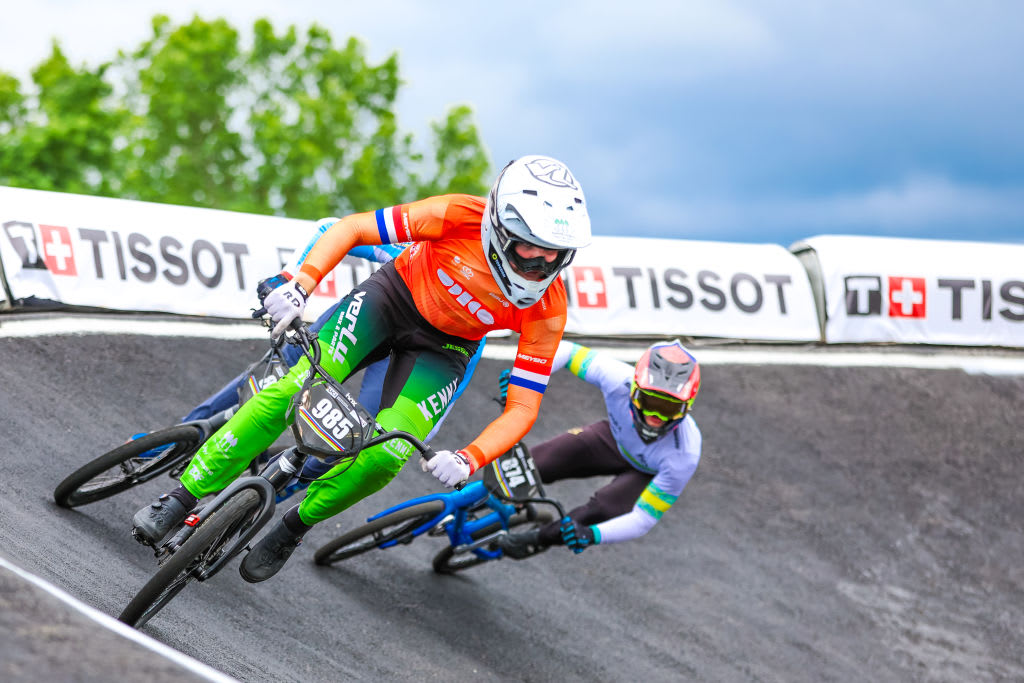
Bicycle motorcross (BMX) racing became an official Olympic event in 2003 after enjoying decades of international popularity. Now, the adrenalin-infused sport features riders from around the world competing on a track with challenging jumps, turns, and corners.
In this chapter from Cycling Science, Manuel Mateo-March and Cristina Blasco-Lafarga explore the rules and challenges of BMX racing, from track design to the unique neuromuscular profile required to be an Olympic level competitor.
While martial arts and combats sports are not necessarily the same, both involve mental discipline and focus. From judo and taekwondo to kickboxing and wrestling, hand-to-hand competition can strength the mind, body, and spirit when approached correctly.
Explore these selections from Human Kinetics Library and take a tour through sports that require much more than the ability to kick or punch.
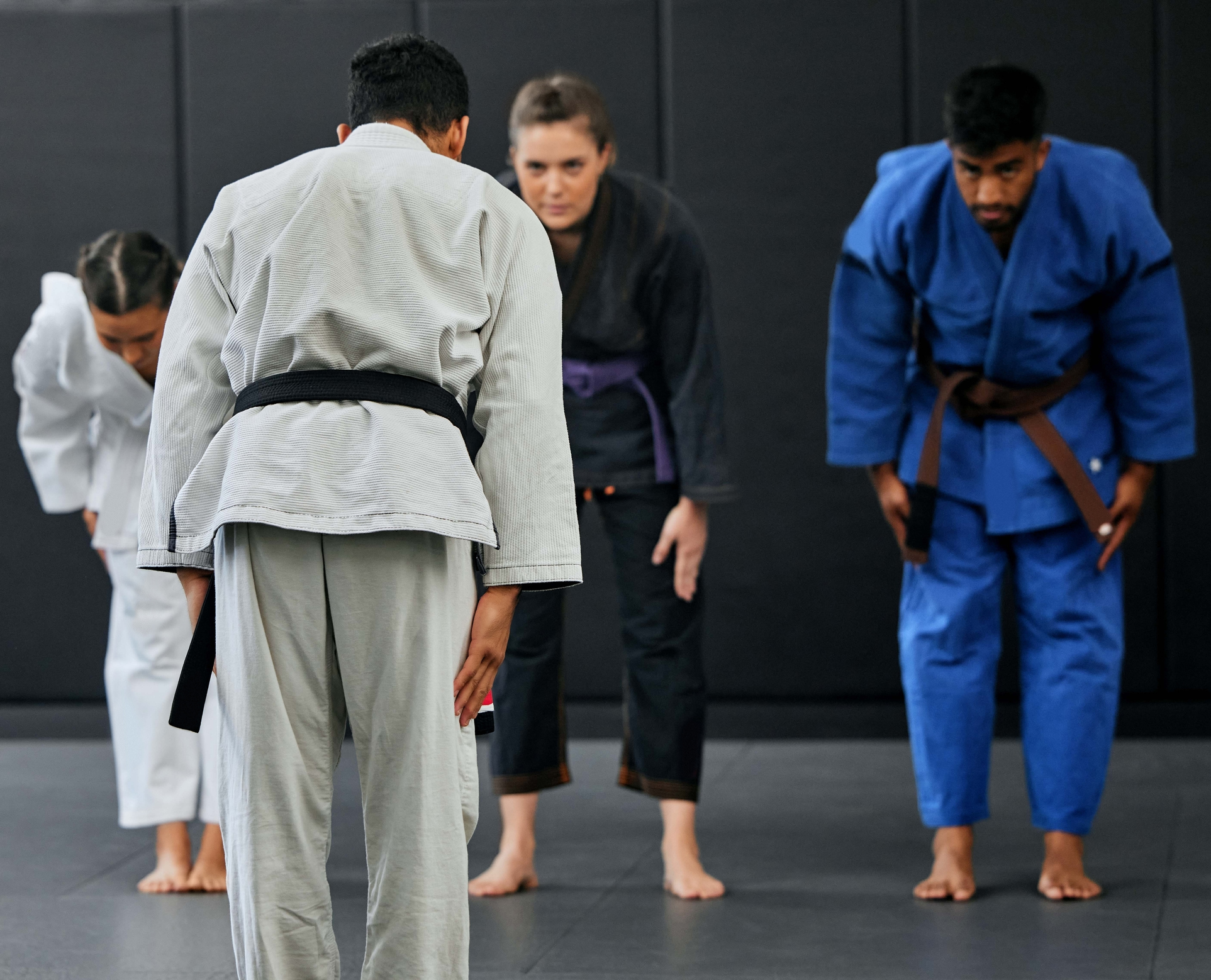
Many hand-to-hand competitions involve high-intensity interval training (HIIT)—emphasis on intense. In their book Science and Application of High-Intensity Interval Training, editors Paul Laursen and Martin Buchheit bring together experts who apply HIIT to a range of athletic activities including combat sports.
This sample chapter by sports performance expert Duncan French offers training advice focusing on the role of speed and explosive strength in a range of combat sports including wrestling, boxing, and taekwondo.
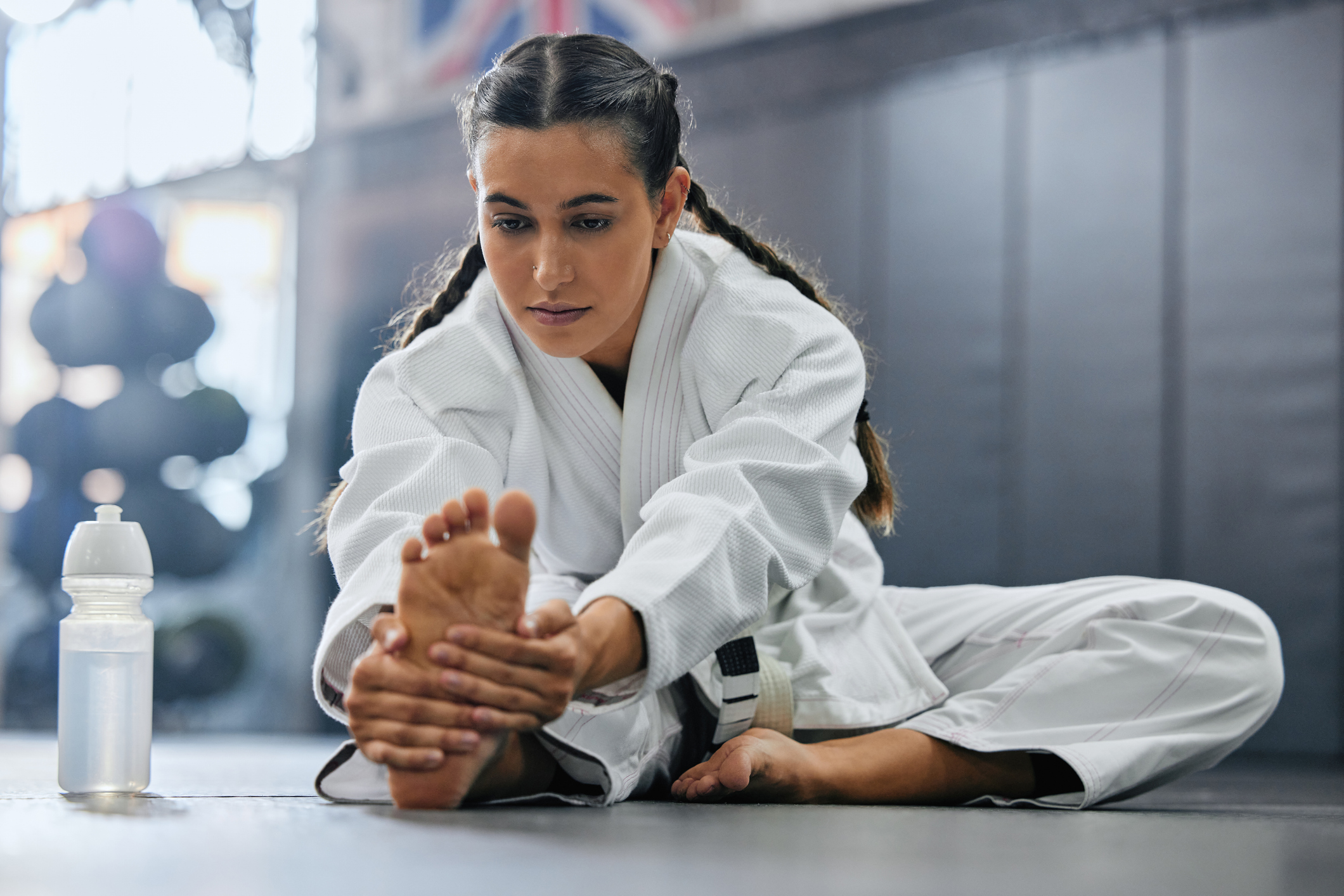
Whether you’re engaging in taekwondo, karate, judo, kung fu, muay thai, or other martial arts, the path to success begins with understanding the necessary physical and mental standards. Expert and veteran coach Loren Landow’s Ultimate Conditioning for Martial Arts begins with this sample chapter mapping out the physical requirements of martial arts, considering key factors like speed, agility, flexibility, and power, as well as how these elements work together to help learners master their craft.

After learning about the fundamental requirements for success in the martial arts, continue exploring Landow’s ultimate guide with this chapter providing an overview of base conditioning. Here, the author provides training guides that address three energy systems—anaerobic alactic, anaerobic lactic, and aerobic—to help competitors maximize fuel to produce short explosive bursts of power and still sustain energy in longer durations.
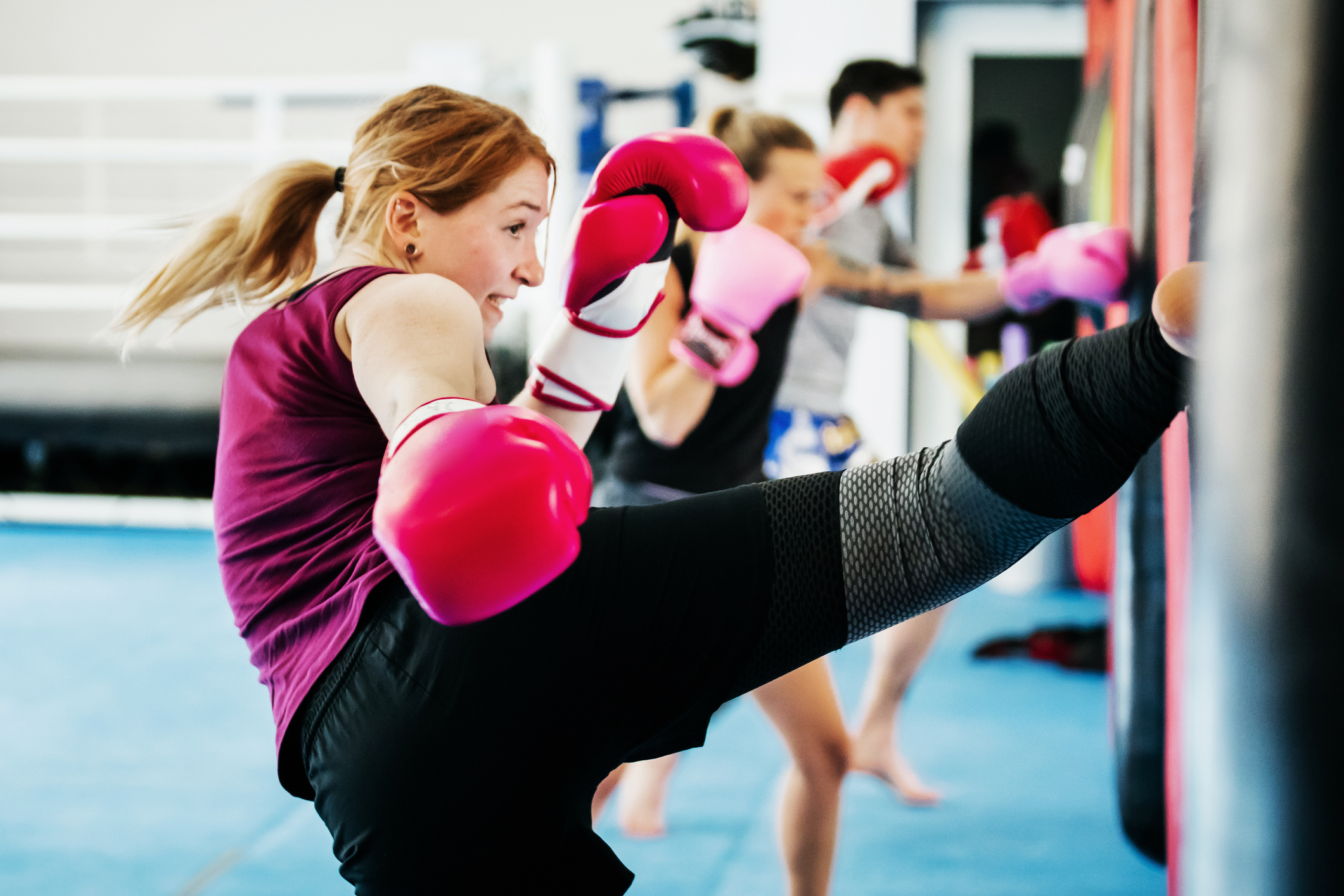
Attempting to learn a new sport can feel intimidating, especially within the martial arts. For beginners, the best way to gain confidence is to learn and practice as part of a group. In their book Methods of Group Exercise Instruction, experts Mary M. Yoke and Carol K. Armbruster present guidelines that can help instructors provide participants with the best possible learning experience.
Read this chapter in which Yoke and Armbruster offer advice for instructors teaching kickboxing, whether their learners want to compete, increase fitness, or have fun.
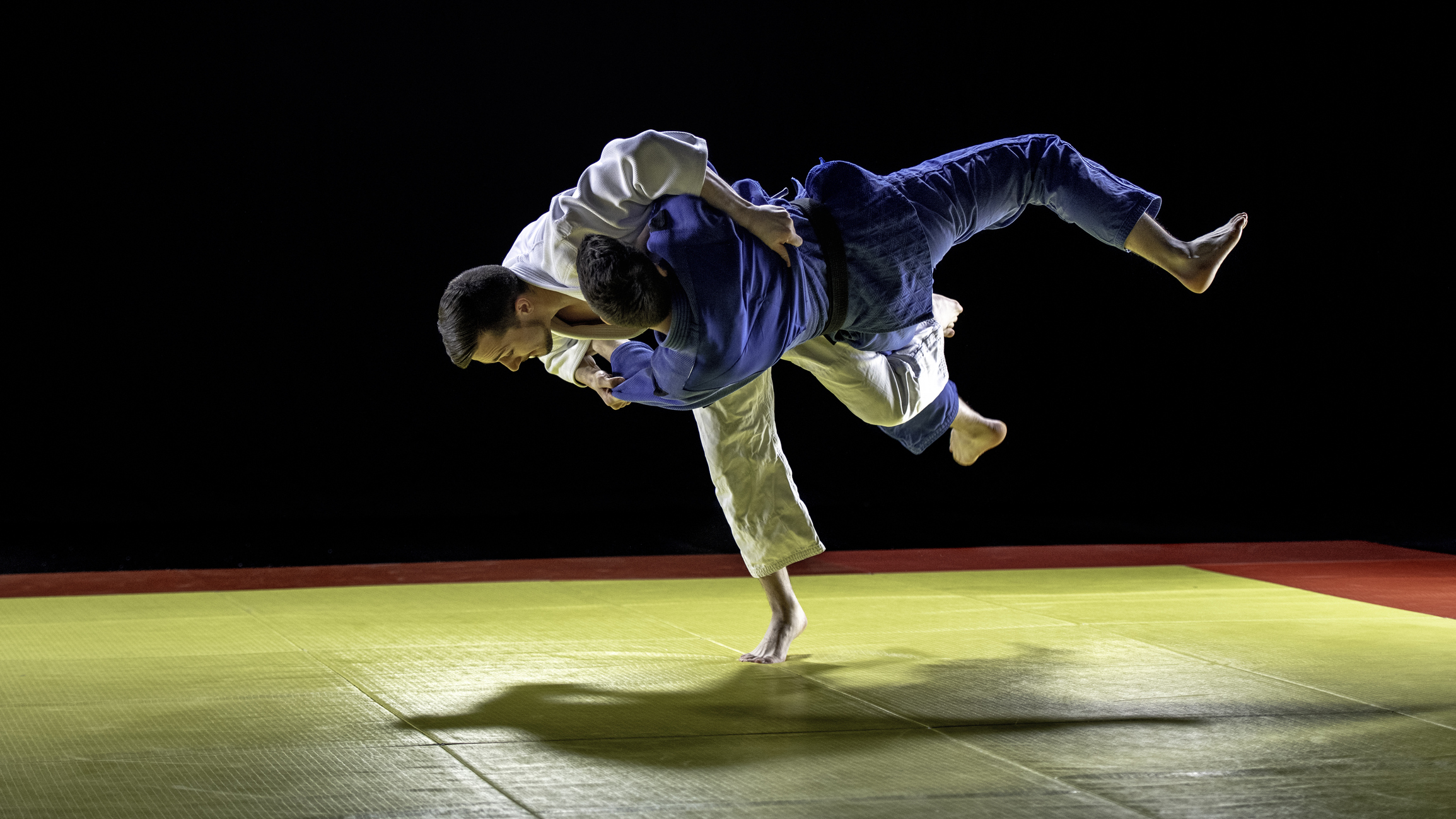
Long considered one of the world’s most popular martial arts, judo is also one of the most physically demanding. Among its many key elements, judo requires a high level of endurance to help competitors push through physical and mental exhaustion. In his book Training and Conditioning for Judo, sport science expert Aurélien Broussal-Derval presents this chapter with advice to help participants increase endurance that in turn improves strength, balance, and control.
Teaching dance effectively requires knowledge in a range of subject areas, from dance pedagogy to anatomy and biomechanics. Explore these free-to-access selections about the art and science of dance education from Human Kinetics Library, including excerpts from our annual Dance Techniques collection update; and discover fresh insights on dance instruction for students of all ages and skill levels.
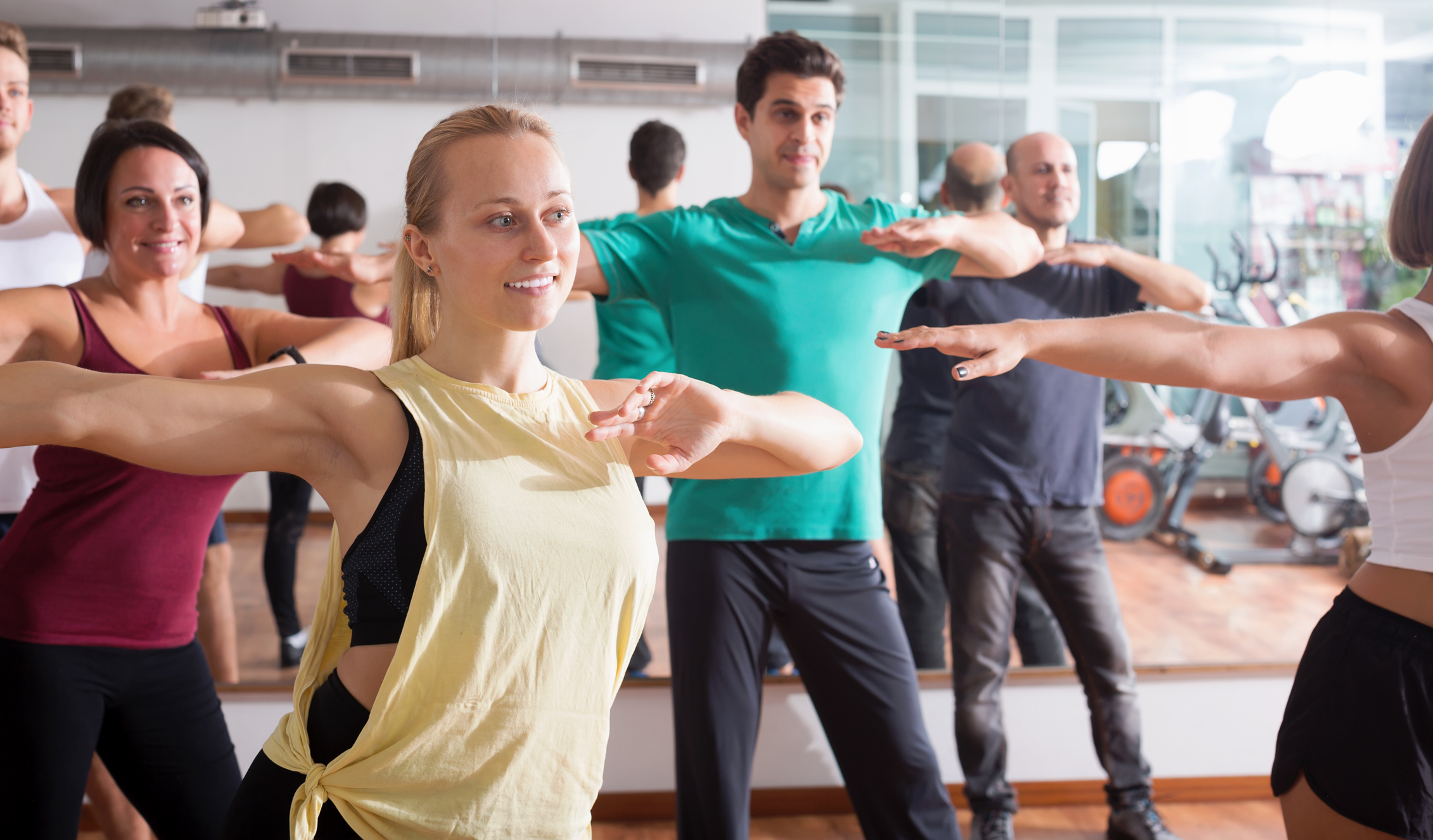
For new dance teachers as well as those dancers preparing to teach, being able to envision dance education itself is as important as the practical application of lessons. This means distinguishing dance and dance education, understanding different learning experiences, and being open to new teaching methodologies.
This introductory chapter to Dance Teaching Methods and Curriculum Design: Comprehensive K-12 Dance Education, offers teachers and learners a valuable foundational perspective as they embark on their teaching journey. The second edition of this foundational text uses a holistic approach to dance pedagogy for teaching in school and community environments.
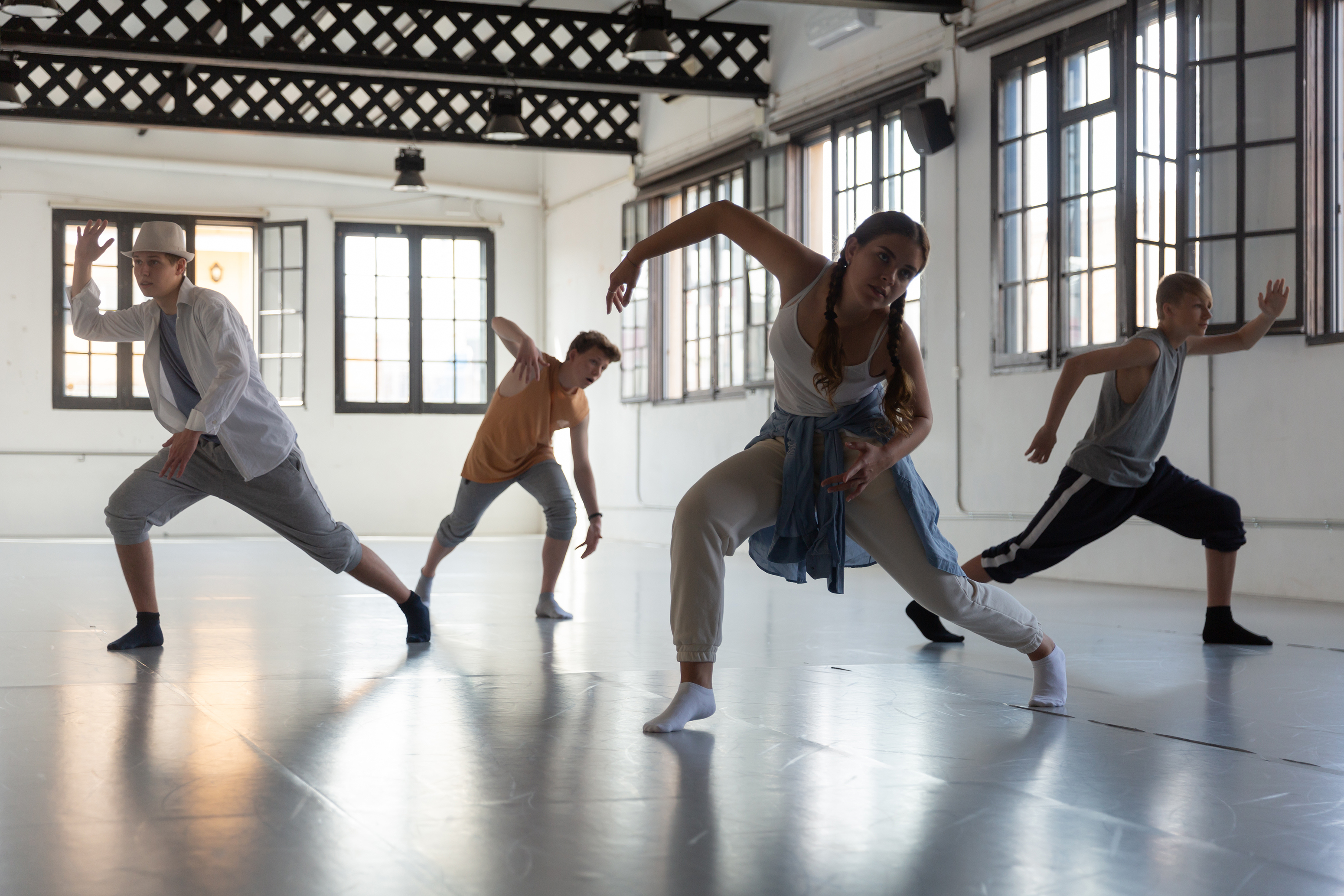
Incorporating improvisational movement into a dance class can help students strengthen their expressiveness, unlock their physicality, and learn fundamentals of choreography. In More Dance Improvisations, dance teacher and choreographer Justine Reeve builds on the success of her previous book Dance Improvisations to offer instructors new improvisation activities to help dancers explore and experience movement.
In this sample chapter, Reeve offers warm-up games that can serve to mobilize the body and help strengthen dancers’ creativity and overall skills.

Developing dance practice is part creative art and part practical science. In the new edition of Brain-Compatible Dance Education, Anne Green Gilbert offers insights drawn from brain research to help teachers empower their dancers, invigorating their minds and bodies.
In this selected chapter, the author explores fundamental principles that can help teachers enrich dance curriculum with a better understanding of the connection between brain and body.
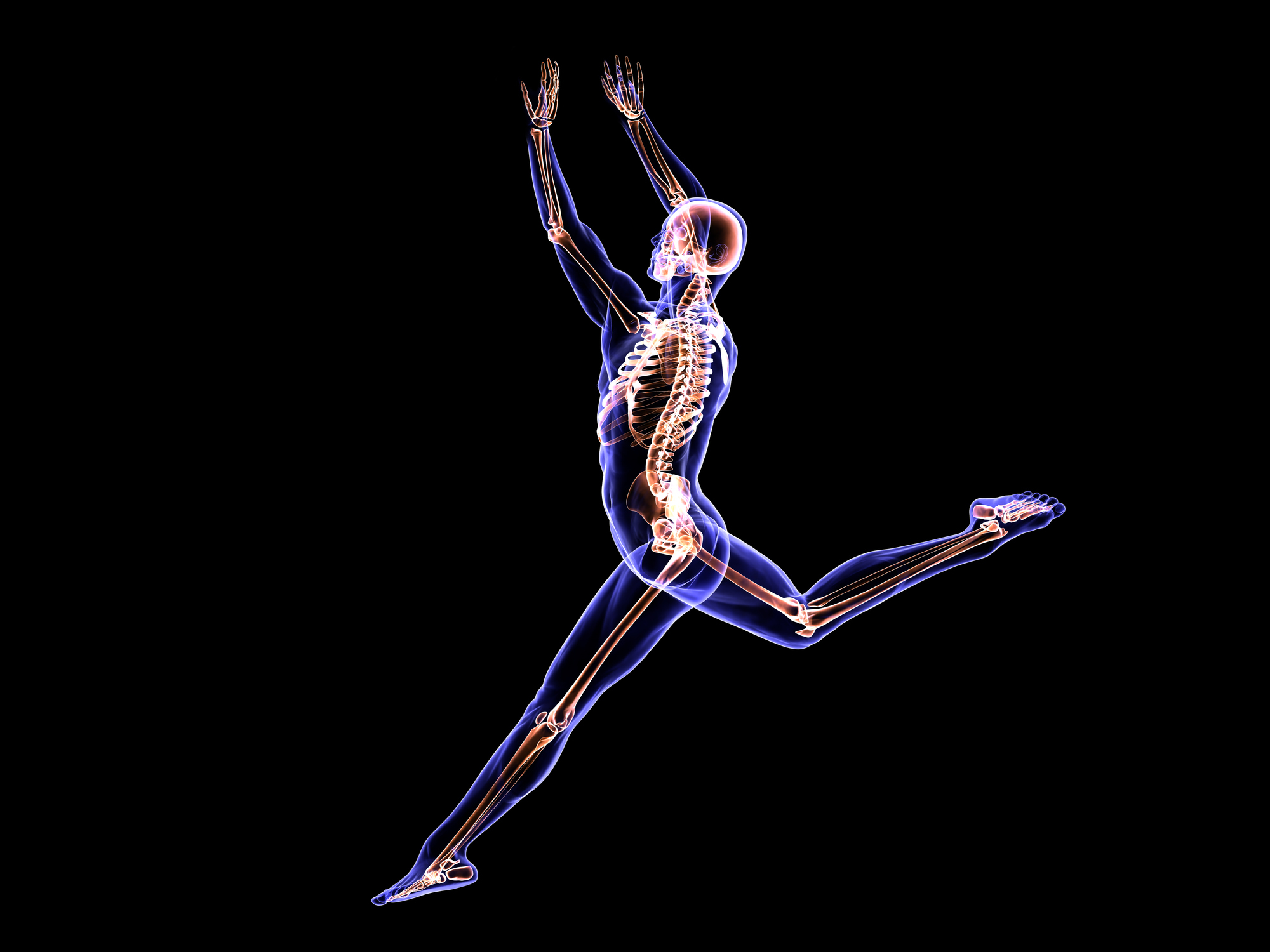
Teaching dance requires deep knowledge of how movement itself works—in particular, fundamentals of anatomy and biomechanics. Dance Anatomy and Kinesiology by Karen Clippinger serves as both a course text and a reference for dance teachers, students, and professionals with anatomical illustrations and action photos addressing key physiological principles.
Read this provided chapter which gives readers a clear understanding of the skeletal system and its movements, including tissues, bones, and joints, vital to both maximizing movement and avoiding injury. Then watch this supplemental video, in which Clippinger offers tips for helping dancers improve standing postural alignment.
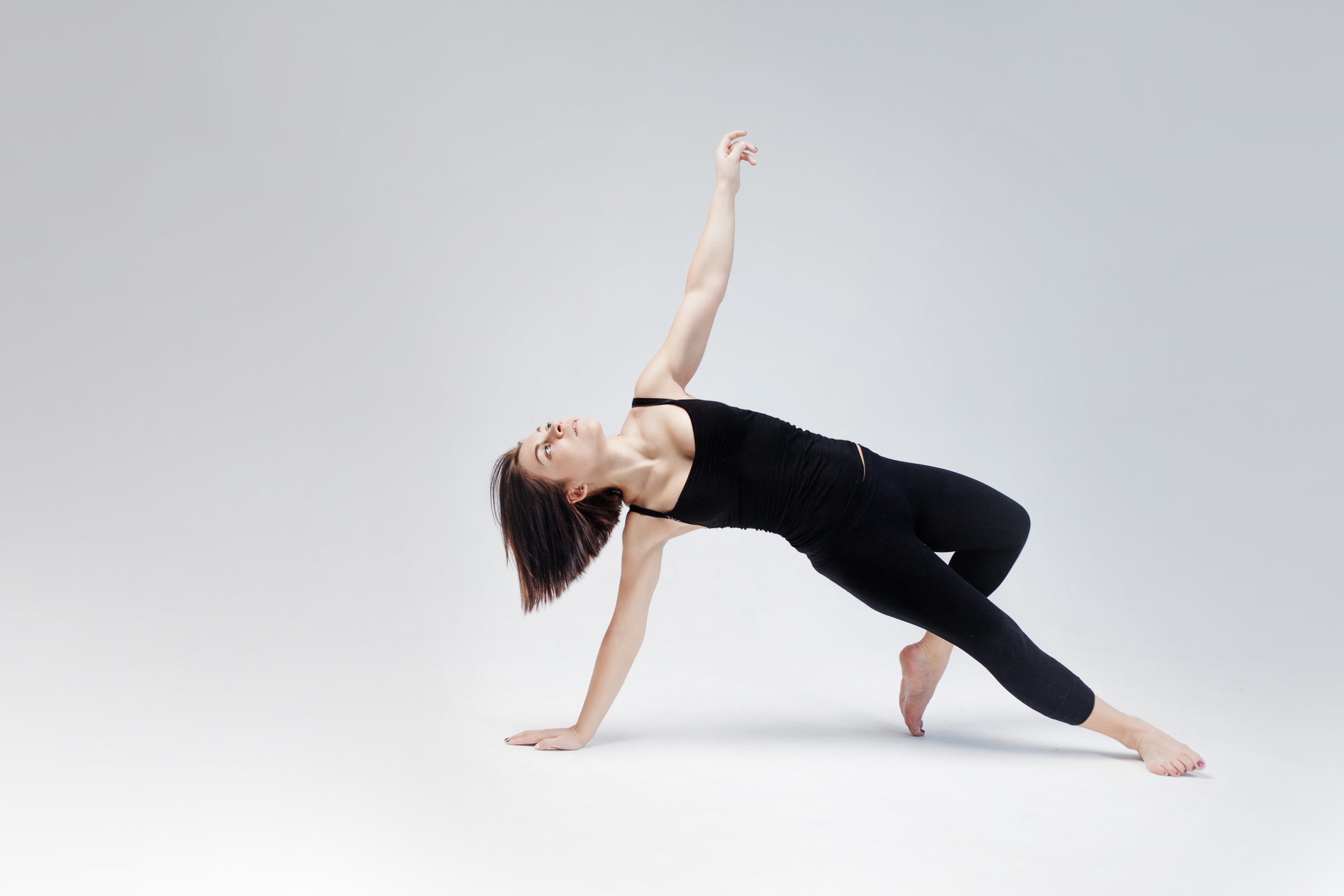
Knowledge of motor behavior is foundational in helping dancers learn and master new skills. Motor Learning and Control for Dance is the first resource to address motor learning theory from a dance perspective, offering dance educators practical ways to integrate the science of dance into their pedagogy.
This provided chapter describes key theories of motor development that can be applied to instruction for dancers of ranging skill levels.
All images on Featured Content and Home pages courtesy of Getty Images and Pixabay.